If you are planning your first visit to Rome and have limited time, this Rome itinerary is perfect for you. With 2 days in Rome, you have just enough time to visit the highlights. Tour the Vatican Museums, enjoy the amazing view from St. Peter’s Basilica, marvel at the Colosseum, get a history lesson at the Roman Forum, and stroll through the heart of Rome, with its colorful piazzas and ancient historical sights.
In this article, get the full details on how to spend a perfect 2 days in Rome. Learn how to skip the lines, where to stay, where to eat, and much more. Let us take the guesswork out of planning your dream trip to Rome.
About this Rome Itinerary
All of the times in the daily schedules are rough estimates, just to give you an idea about timing throughout the day. Your times may differ, based on queues and how much time you decide to spend at each place. I did my best to anticipate waiting times and visiting times, but on very busy days (or very quiet days) these times can differ.
You will have to do some work in advance by booking entrance tickets and restaurant reservations, but this will save you hours of time once in Rome. We’ll let you know how to do this, too. Tim and I are Type A planners and we will share with you lots of tips we learned from our multiple visits to Rome.
I do my best to keep the hours of operation and pricing up to date for each attraction, however, these can change at any time. I recommend getting updated hours and pricing for your dates of travel. The link to the official website is provided for each site.
We have tons more information about Rome (and Italy) which you can see in our Italy Travel Guide.
Best Things to Do with 2 Days in Rome
Below is a list of the places to visit if you have 2 days in Rome. All of these are included on this Rome itinerary.
- Colosseum
- Roman Forum
- Palatine Hill
- Vatican Museums & Sistine Chapel
- St. Peter’s Basilica
- Trevi Fountain
- Pantheon
- Spanish Steps
- Piazza Navona
- Borghese Gallery
- Trastevere
How Many Days Do You Need in Rome?
Two days is the minimum amount of time that we recommend that you spend in Rome (good thing you are looking at this 2 day in Rome itinerary!).
With one very busy, well-planned day, you can visit the highlights of Rome, but it can be exhausting, albeit very memorable.
Two days allows you to slow down a little bit, visit a few more places, and not feel like you are in a race.
If you have even more time, with 3, 4, or more days, you can begin to dive deeper into Rome’s long list of amazing sites, go off the beaten path, and get to know this city better. If you have more than 2 days in Rome, take a look at our 3 Days in Rome Itinerary and our 4 Days in Rome Itinerary to learn how to plan your time.
Rome Itinerary Day 1
Colosseum, Roman Forum & the Historic City Center
Today you get to visit one of the world’s most popular attractions (the Colosseum), stroll through ancient Rome, take in the view from one of the best viewpoints in the city, and end the day with dinner with a view.
Here is an overview of the itinerary:
9:00 am: The Colosseum
10:30 am: Roman Forum & Palatine Hill
12:30 pm: Lunch
1:30 pm: Via dei Fori Imperiali
2:00 pm: Altar of the Fatherland
3:00 pm: Capitoline Hill (optional)
3:30 pm: Walk or Taxi to Piazza Navona
3:45 pm: Piazza Navona
4:15 pm: Historic Heart of Rome
6:15 pm: Aperitif and dinner
How to Use This Map: Click the tab in the top left corner of the map to see a list of the points of interest and to turn layers on/off. Click the icons on the map to get more information about each point of interest.
To take this map with you, click the star next to the title of the map which adds it to your Google account. Next, within your Google Maps app, select ‘Saved’ and then select ‘Maps’. This map title will now appear in your list.
9:00 am: The Colosseum
For many first-time visitors to Rome, the Colosseum tops the must-do list. And why not? This is a marvel of ancient engineering.
Dating back to 80 AD, this is the largest amphitheater that was ever built at the time. It could hold up to 80,000 people, spectators who were drawn here to watch gladiatorial contests, executions, animal hunts, and re-enactments of famous battles. It is one of the seven New Wonders of the World.
In 2019, this was the most popular tourist attraction in the world, with 7.6 million visitors.
With that being said, expect BIG crowds at the Colosseum. For the best experience, book your tickets in advance or join a guided tour.
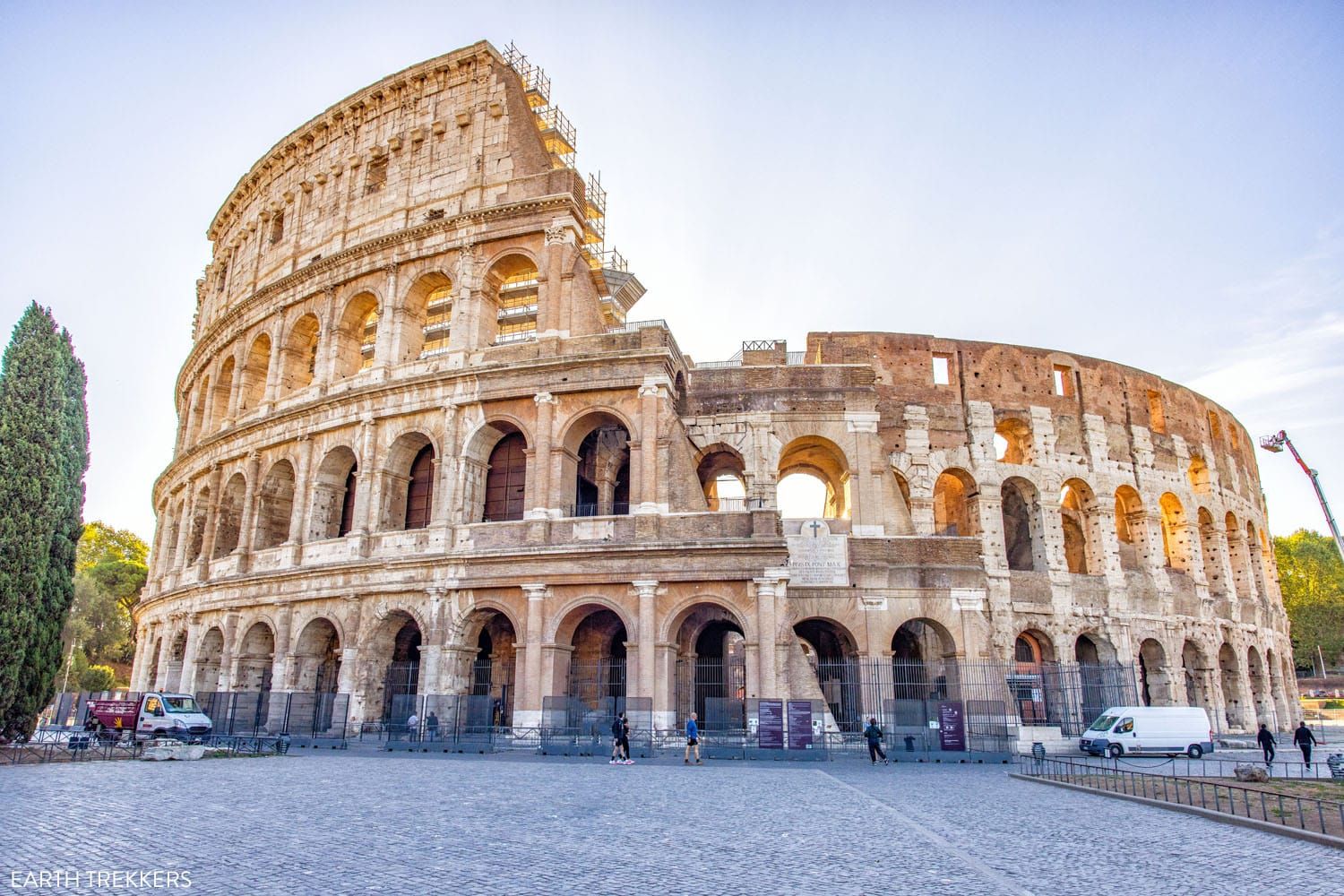
The Colosseum
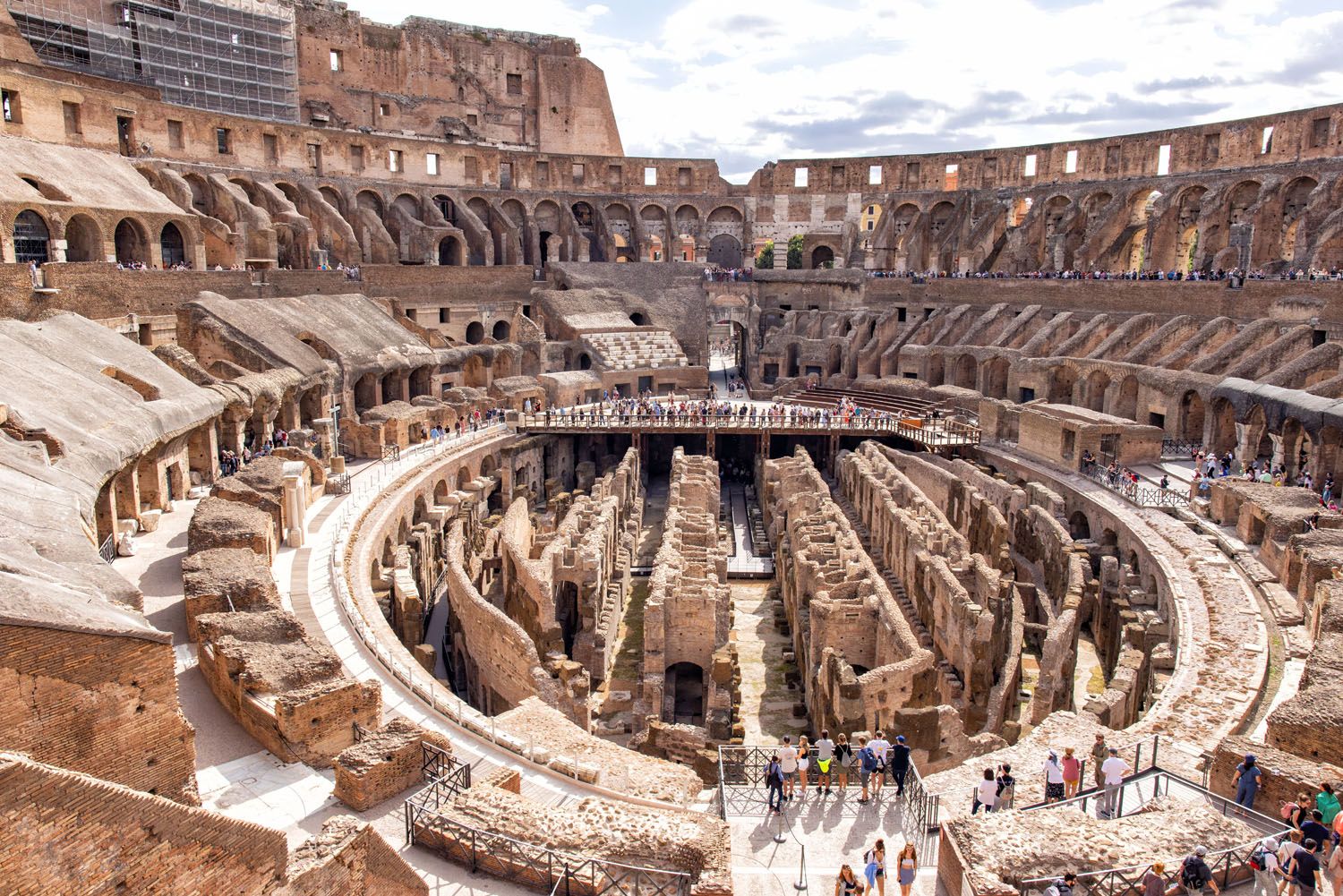
Inside the Colosseum
On a visit to the Colosseum, you can also add on the Arena Floor (stand on a portion of the floor and gaze up at the Colosseum…it’s well worth the few extra euros), the Underground (tour the maze of hallways under the Colosseum), and the Attico (the upper level).
For more information about the Arena Floor, the Underground, and what there is to do at the Colosseum, read our article How to Visit the Colosseum.
How to Visit the Colosseum
On your visit to the Colosseum, you can either wander through it on your own, take the audio guide tour, or join a guided tour. Most visits last 1 to 3 hours.
You must purchase your entrance ticket in advance (you cannot just show up and get in line for a ticket). It costs an extra €2 per ticket for the online reservation fee.
If online tickets are sold out for your dates of travel, I recommend joining a guided tour of the Colosseum. You will spend a little more money than purchasing your tickets directly from the Colosseum website, but at least you will get to visit the Colosseum.
Hours: Hours vary by season. Click here to get hours for your dates of visit.
Cost: €18 for the standard ticket that gets you in to the Roman Forum, Palatine Hill, and the Colosseum; there is also a Full Experience ticket that also includes a visit to the Colosseum arena and underground area for €24
Website: Get updated hours and pricing and purchase your ticket here.
Roma Pass: If you have the Roma Pass, you must make your reservation to visit the Colosseum in advance. There is a €2 reservation fee.
Getting Here: The closest metro stop is Colosseo. When you exit the metro station, the Colosseum will be right in front of you.
Complete Guide to the Colosseum
How to plan a visit to the Colosseum: ticket types, things to do, helpful tips, and lots of photos.10:30 am: The Roman Forum and Palatine Hill
The Roman Forum is the historical center of Rome. This is ancient Rome, a complex of government buildings, temples, and marketplaces from 2000 years ago. Palatine Hill is one of the seven hills of Rome and it sits right next to the Roman Forum. There are several archaeological sites here and you get a nice view over the Roman Forum.
From the Colosseum, walk up Via Sacra towards the Arch of Titus to enter the Roman Forum and Palatine Hill. Visit Palatine Hill first.
Palatine Hill
Palatine Hill sits next to the Roman Forum. It is a complex of archaeological excavations, the remains of temples and palaces, and a museum. During the time of the Roman Republic, many imperial palaces were built here, including palaces for Augustus, Tiberius, and Domitian.
While on Palatine Hill, make sure you visit Terrazza Belvedere del Palatino for a bird’s eye view of the Roman Forum and the Colosseum. It’s one of the best views in Rome. Here is the view:
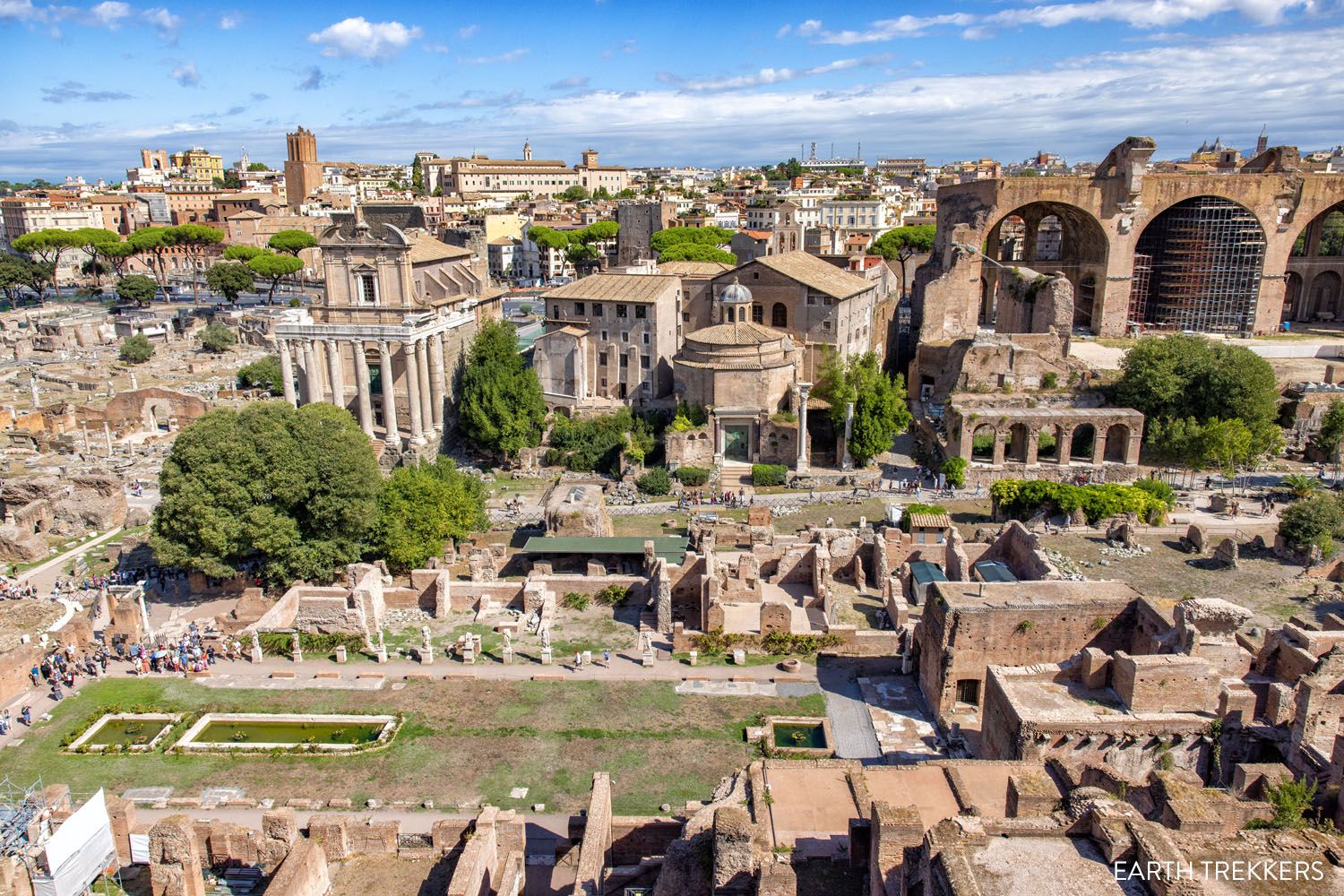
View of the Roman Forum from Palatine Hill
Roman Forum
Notable things to see in the Roman Forum include the Via Sacra, the Temple of Venus, the Temple of Romulus (the bronze doors date back to 309 AD), the Temple of Antonius and Faustina and its “hanging door,” the Temple of Vesta, the Temple of Saturn, the Arch of Septimius Severus, and the Temple of Julius Caesar.
A visit to the Roman Forum lasts 20 minutes to an hour.
12:30 pm: Lunch
For lunch we recommend La Prezzemolina. This highly rated restaurant serves Italian street food and pizza al taglio (pizza by the slice) at budget-friendly prices. It’s one of our favorite restaurants in Rome.
For more restaurant recommendations, check out our Rome Restaurant Guide (it also includes some great rooftop restaurants that are perfect for dinner).
1:30 pm: Via dei Fori Imperiali
From La Prezzemolina, take a stroll along Via dei Fori Imperiali. This street runs between the Roman Forum and the Forum of Augustus and the Trajan Forum. Keep an eye out for Trajan’s Column, which was erected in 113 AD.
Via Fori dei Imperiali ends at Piazza Venezia. From here, you can climb the steps on the Altar of the Fatherland for one of the best views of Rome.
2:00 pm: Altar of the Fatherland
The Altar of the Fatherland, also called Altare della Patria, the Victor Emmanuel II Monument, or simply the “wedding cake,” is one of the most recognizable landmarks in Rome.
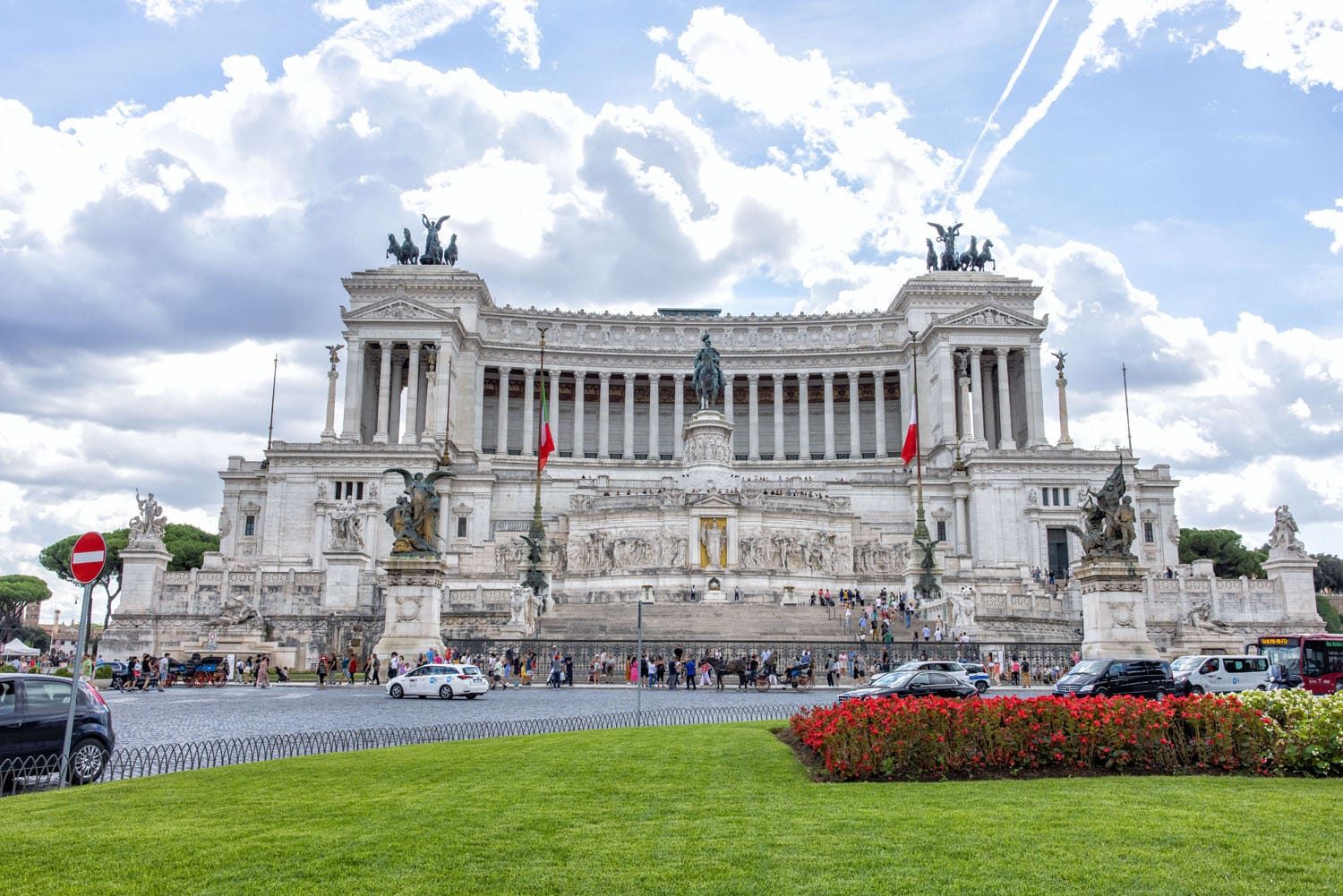
Altar of the Fatherland
This national monument was built between 1885 and 1935 to honor Victor Emmanuel II, who was the first king of unified Italy. It contains the Tomb of the Unknown Soldier and an eternal flame.
For free, you can climb the series of staircases to the upper terrace and café. For the best view, ride the elevator (€12 in 2022) to the top of the monument for panoramic views of Rome. From here, you can see all of Rome’s major landmarks, including the Colosseum, St. Peter’s Basilica, Palatine Hill, and the Roman Forum.
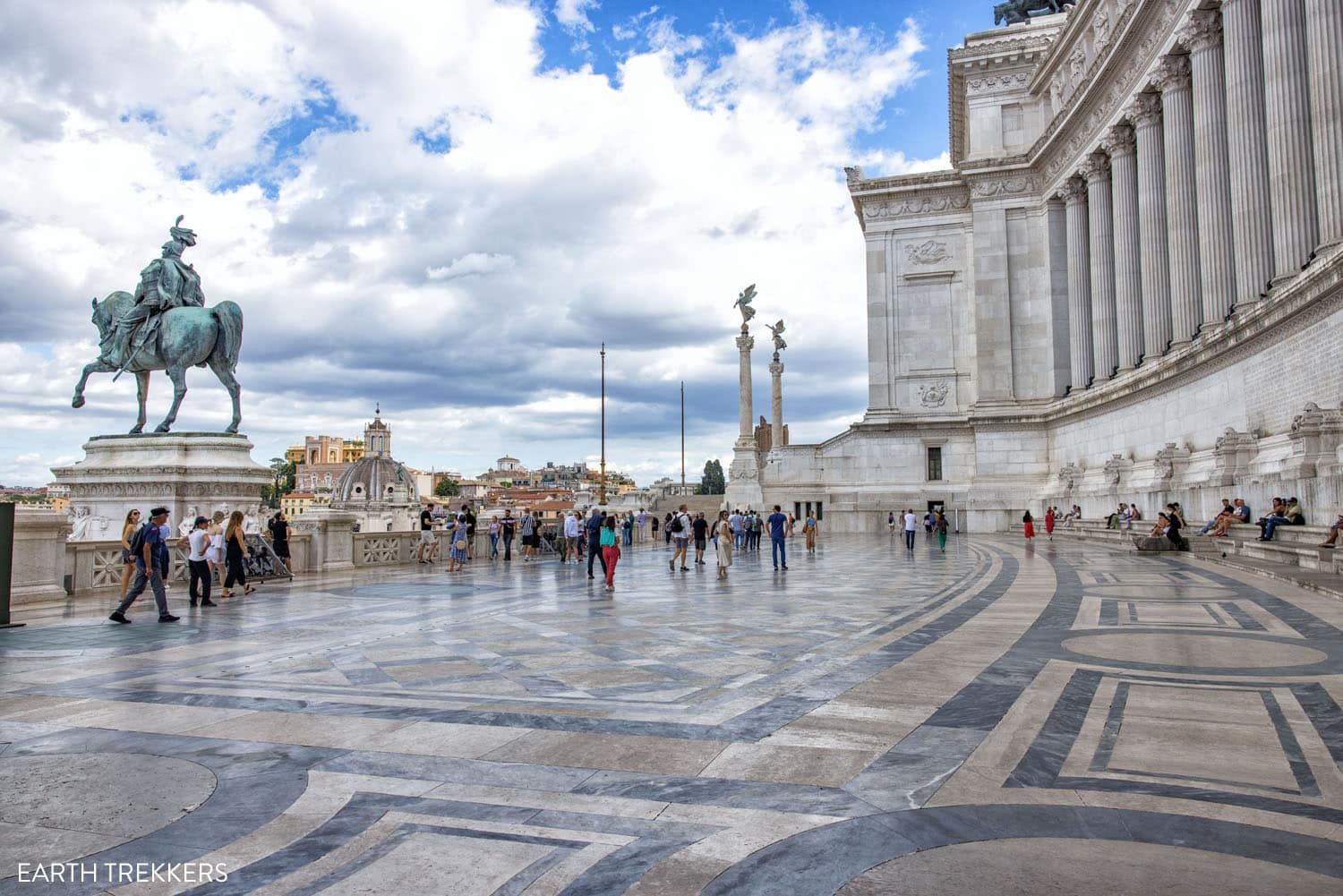
One of the terraces on Altar of the Fatherland
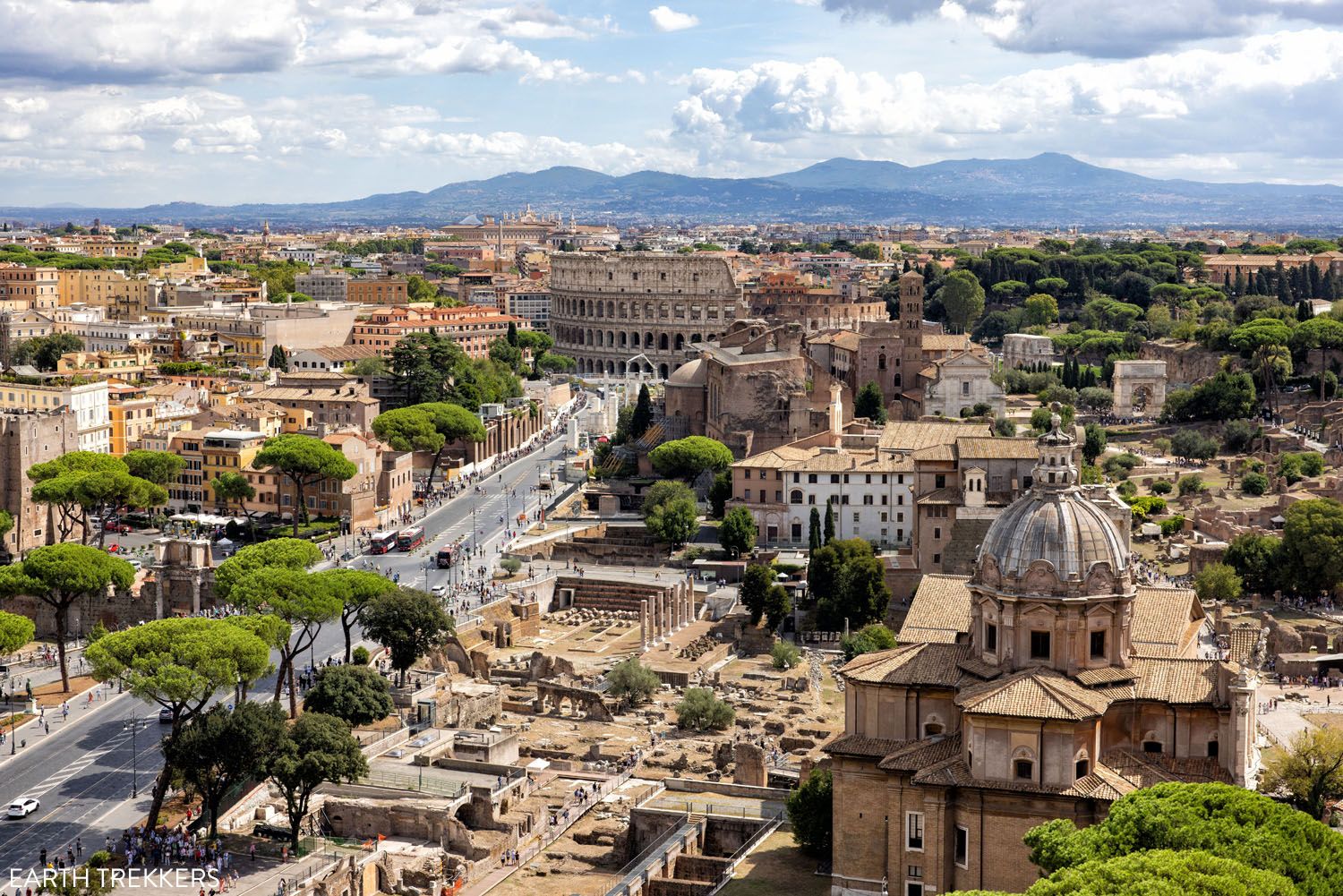
View from the top of the Altar of the Fatherland
3:00 pm: Capitoline Hill (Optional)
Capitoline Hill sits next to the Altar of the Fatherland. On this hill are the Capitoline Museums (you won’t have enough time today to visit the museums) and a great viewpoint of the Roman Forum.
The reason to visit Capitoline Hill is to get this view:
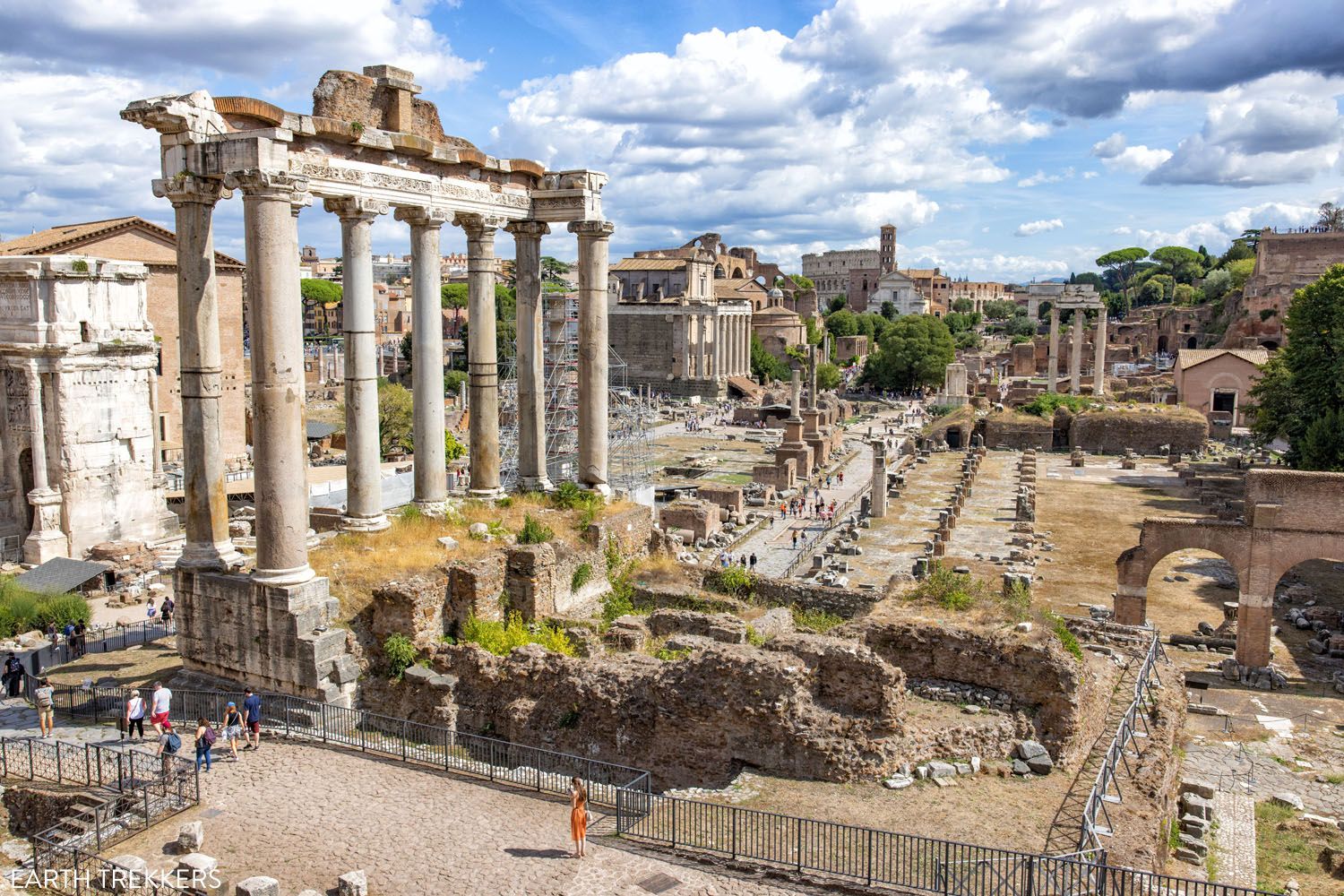
This is not for everyone, since it adds more walking and more time to this itinerary. From the Altar of the Fatherland, this detour will add about 20 minutes and close to 1 kilometer (0.6 miles) of walking.
To do this, walk along Via del Teatro di Marcello. You will walk up a series of steps to get to Campidoglio, which is the square on Capitoline Hill that was designed by Michelangelo. Cross the square, walk between Palazzo dei Conservatori and the Senatorial Palace along Via del Campidoglio to Terrazza sul Foro for the viewpoint of the Roman Forum.
3:30 pm: Walk or Taxi to Piazza Navona
From Altar of the Fatherland and Piazza Venezia, it is a 15-minute walk to get to Piazza Navona. Along the way, you will pass Largo di Torre Argentina, which is an archaeological site that contains Roman Temples and it is believed Julius Caesar was assassinated at this spot. It is also a cat sanctuary.
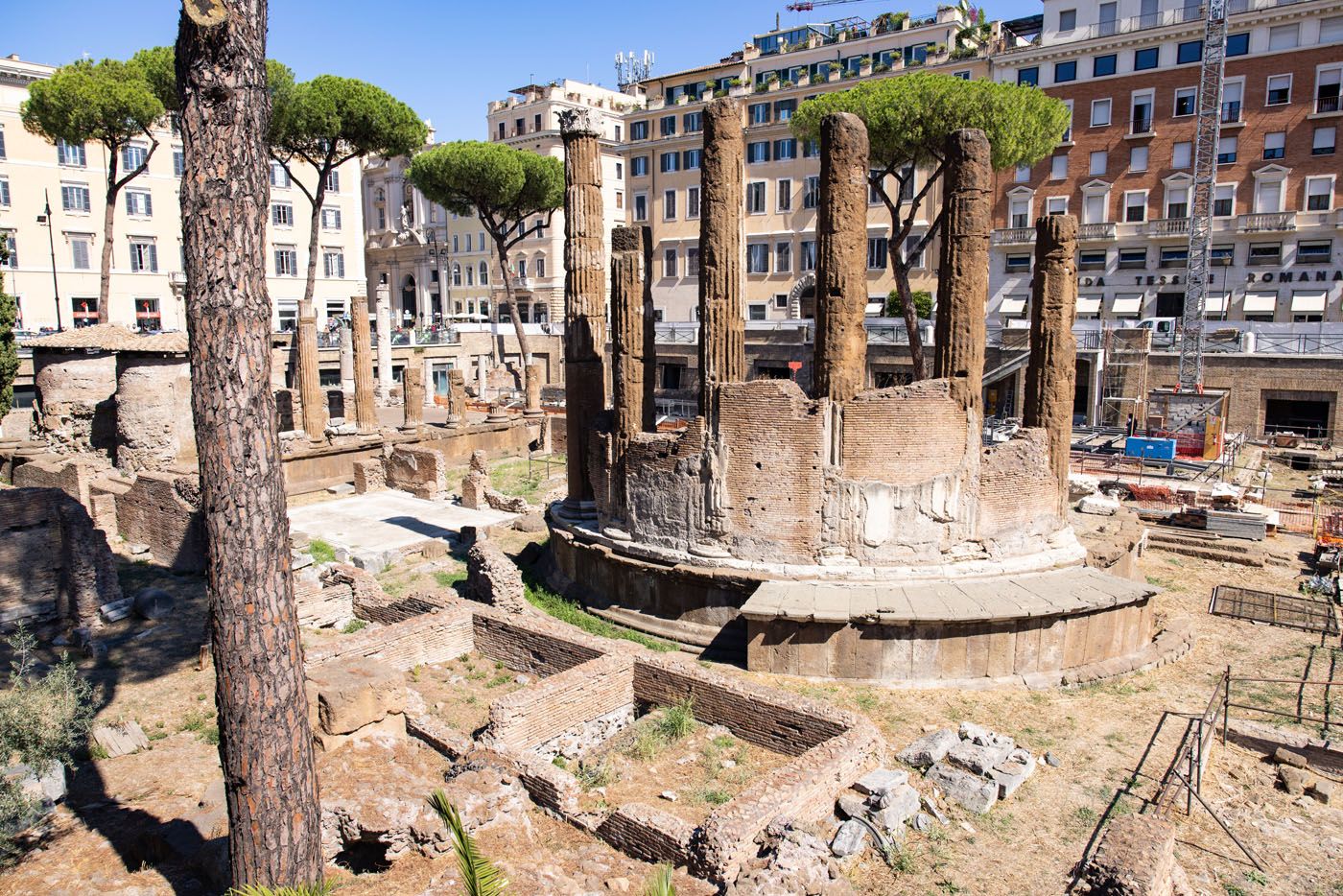
Largo di Torre Argentina
If you want to save your steps, you can hire a taxi at Piazza Venezia. It is not worth walking to the Colosseo metro station, since that is also a 15-minute walk.
3:45 pm: Piazza Navona
Piazza Navona is one of Rome’s most famous squares. It is filled with cafes, fountains, and lots of people. While you are here, take a look at the three fountains (the Fountain of the Four Rivers, the Fountain of Neptune, and the Fountain of the Moor), watch the street performers, and step inside Sant Agnese in Agone.
This is a good place to rest your feet for a few minutes. Many cafes get mediocre reviews, but it’s a nice spot to get a cup of coffee or glass of wine. We recommend Bernini.
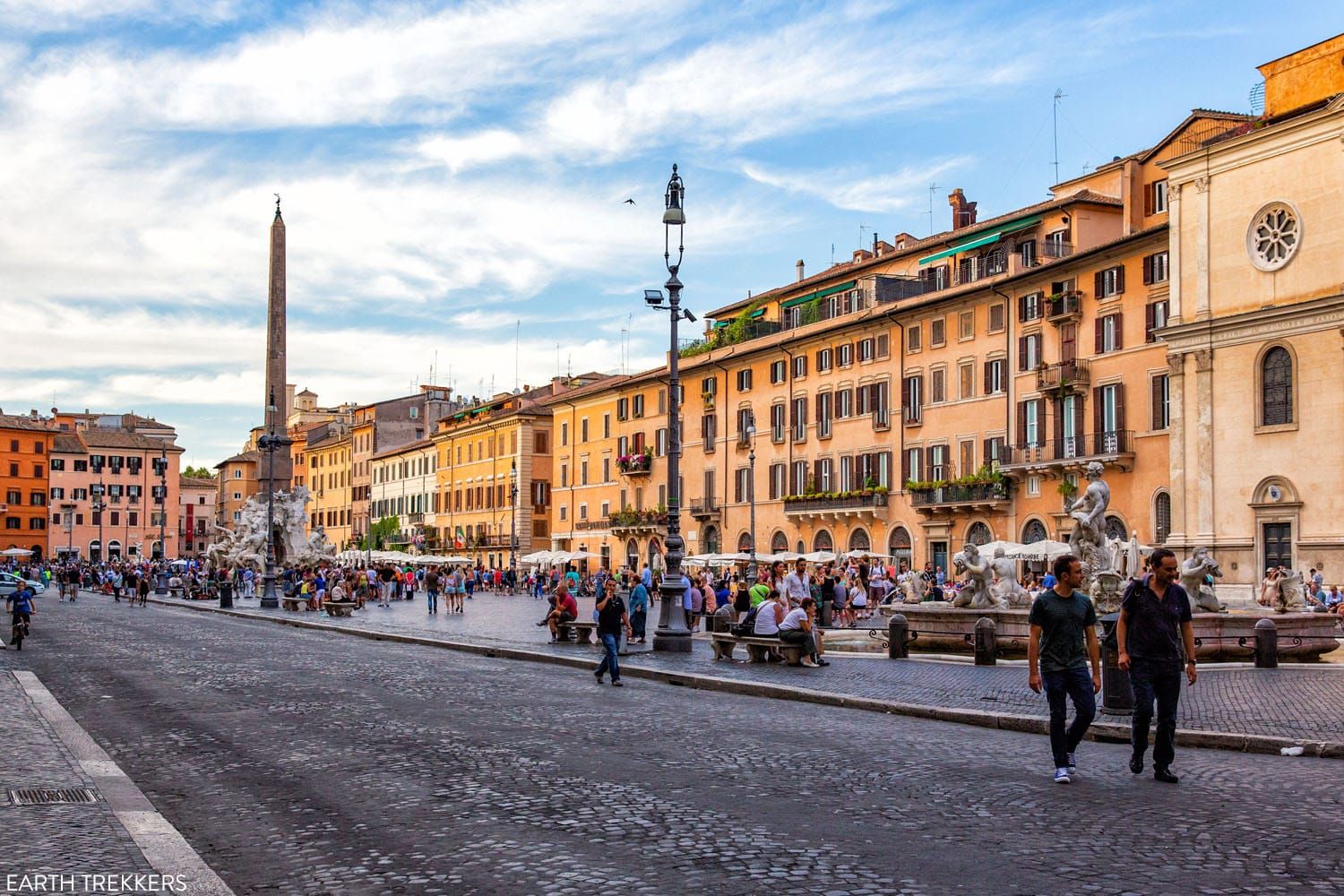
Piazza Navona
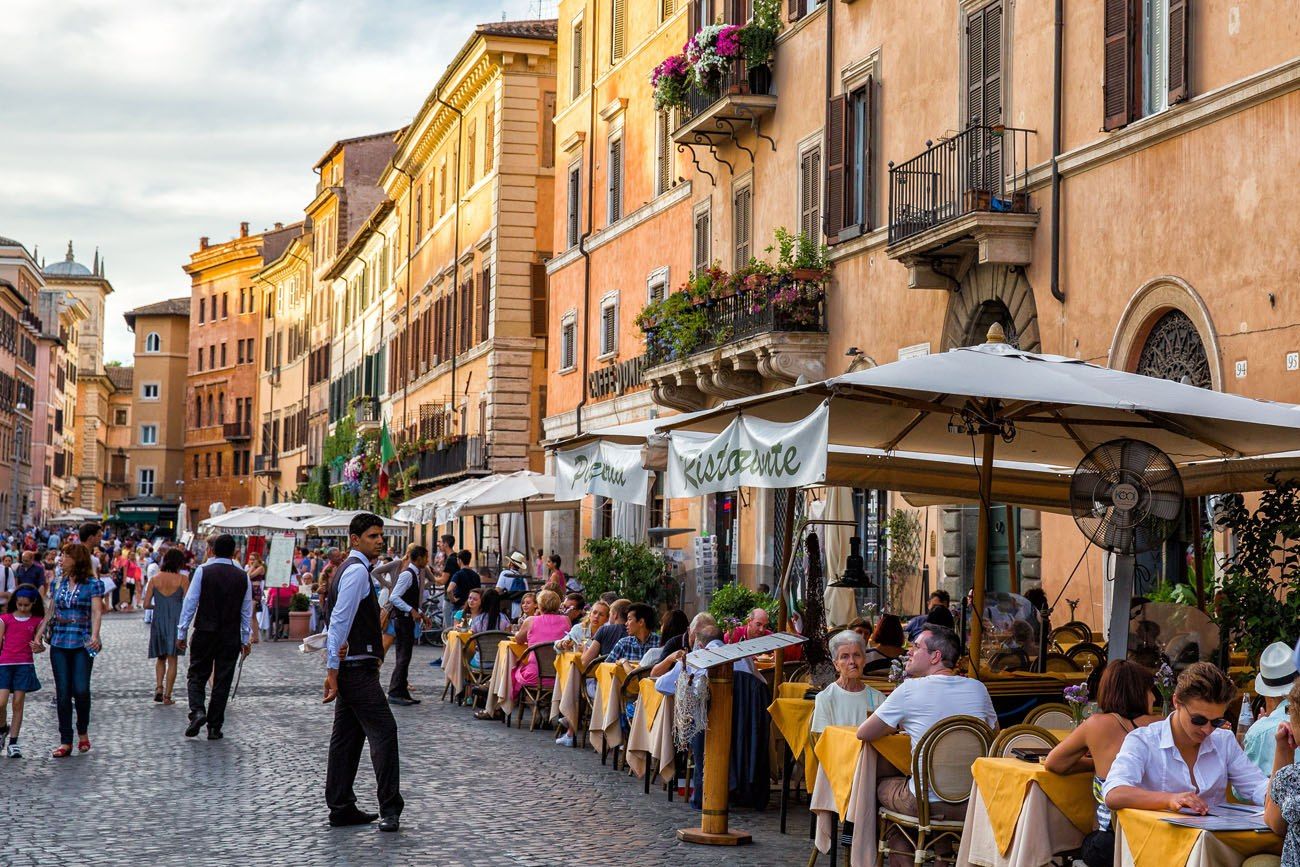
Cafes on Piazza Navona
4:15 pm: Historic Heart of Rome
Once you are finished in Piazza Navona, continue the stroll through the heart of Rome. The route is on our map above under the title “Heart of Rome Walking Route.”
The Pantheon
It’s a quick walk to the Pantheon. The Pantheon is old. Really old. The Romans were master builders and the Pantheon is one of their most amazing accomplishments.
Construction of the Pantheon was completed around 120 AD. Just think about what this building survived…barbarian raids, wars, earthquakes, and the natural aging of 1900 years of wind, rain, and even snow. For 1300 years, this was the largest dome in the world, until the completion of St. Peter’s Basilica during the Renaissance. But the best part of the Pantheon is the oculus, the circular window in the top of the dome, the only source of light inside of the building.
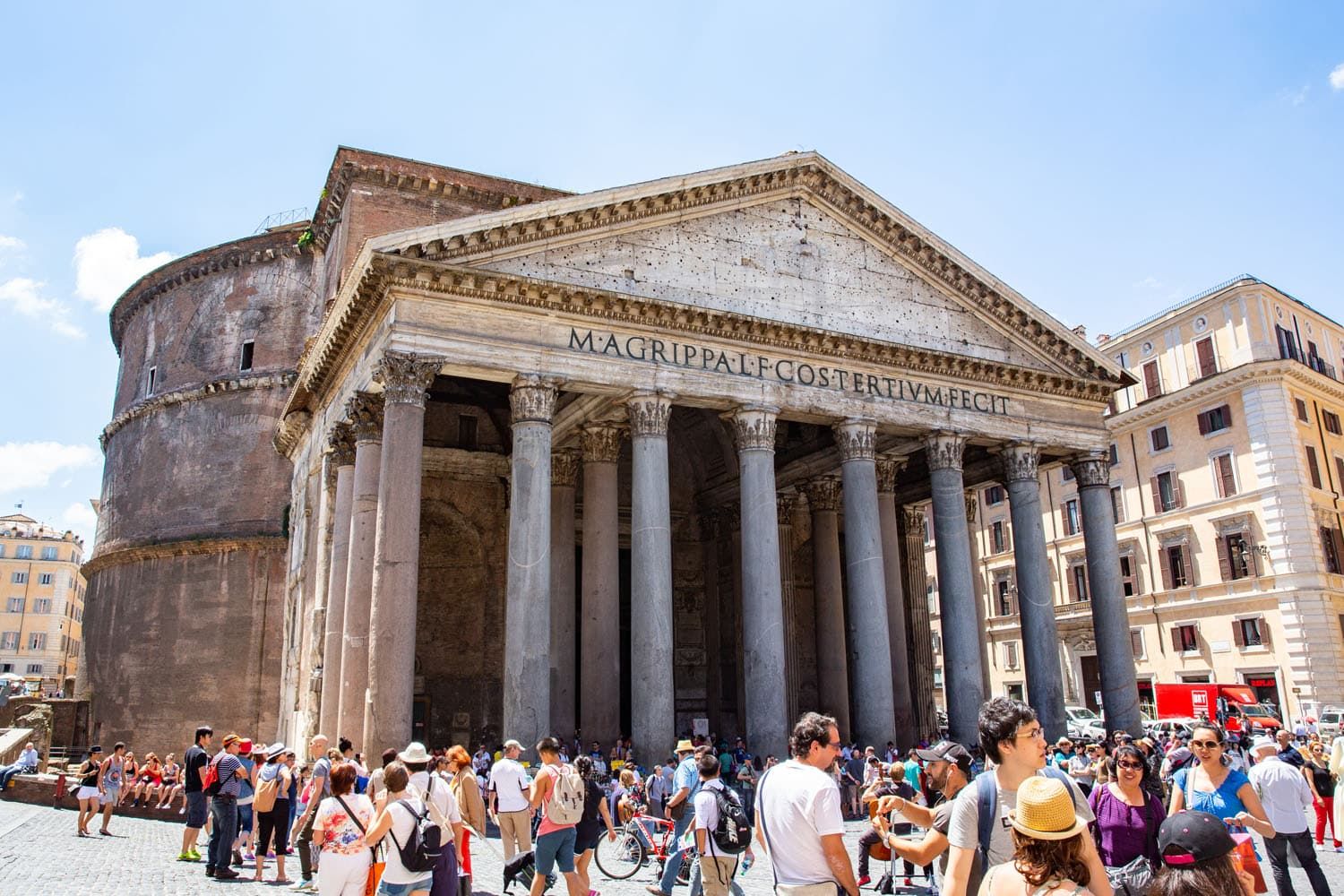
Pantheon
When you first walk up to it, the Pantheon looks like an ancient, bulky, worn-out building. But inside, it looks surprisingly nothing like the exterior. It’s beautiful in the inside, with colorful Italian marble and the very unique lighting from the oculus.
Purchase your tickets online in advance through GetYourGuide, which is much easier to use than the official website.
Trevi Fountain
Continue to the Trevi Fountain, passing by the Temple of Hadrian and Venchi, one of our favorite gelato shops in Rome.
The Trevi Fountain is one of Rome’s most famous icons. Fendi funded the most recent renovation, which took over one year to complete. State of the art LED lights illuminate the fountain…it is an awesome sight to see!
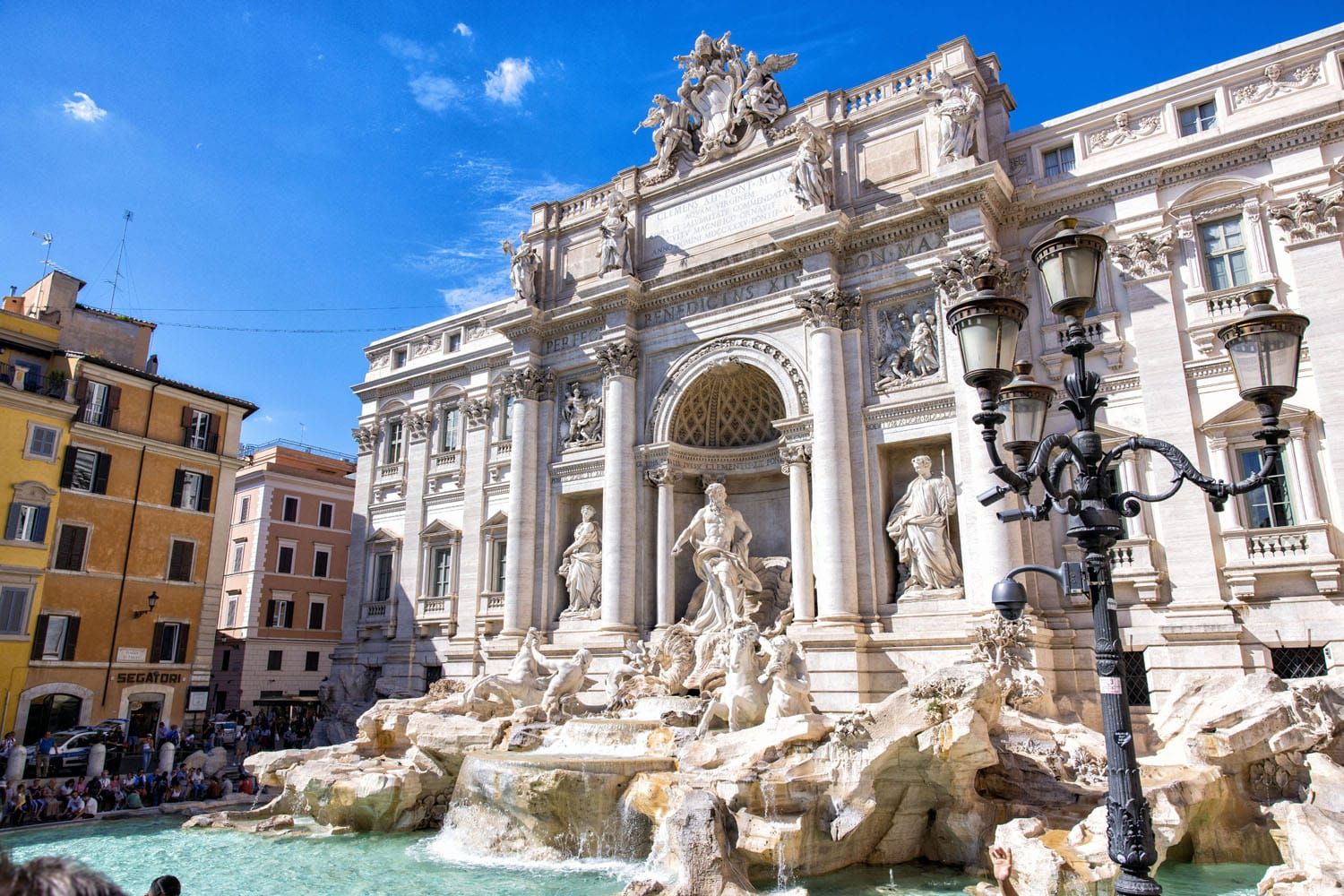
Trevi Fountain
Legend has it that if you throw a coin into the Trevi Fountain, you will be ensured a return visit to Rome. This is such a popular activity that an estimated $1.5 million USD was thrown into the fountain in 2016!
If you need a break, or just want the view, go to Garden Roof Trevi (also called Trevi Roof Top), a tiny rooftop bar that has a view over the Trevi Fountain. You can have a drink with a view and rest your feet for a few minutes.
Spanish Steps
Continue the walk until you get to the Spanish Steps.
This stairway is one of the most popular places to visit in Rome, frequently shows up in walking tours of the city, and is free to visit. The fountain that sits at the bottom of the Spanish Steps, Fontana della Barcaccia (Fountain of the Longboat), dates back to 1629 and was built by Pietro Bernini, father of Gian Lorenzo Bernini.
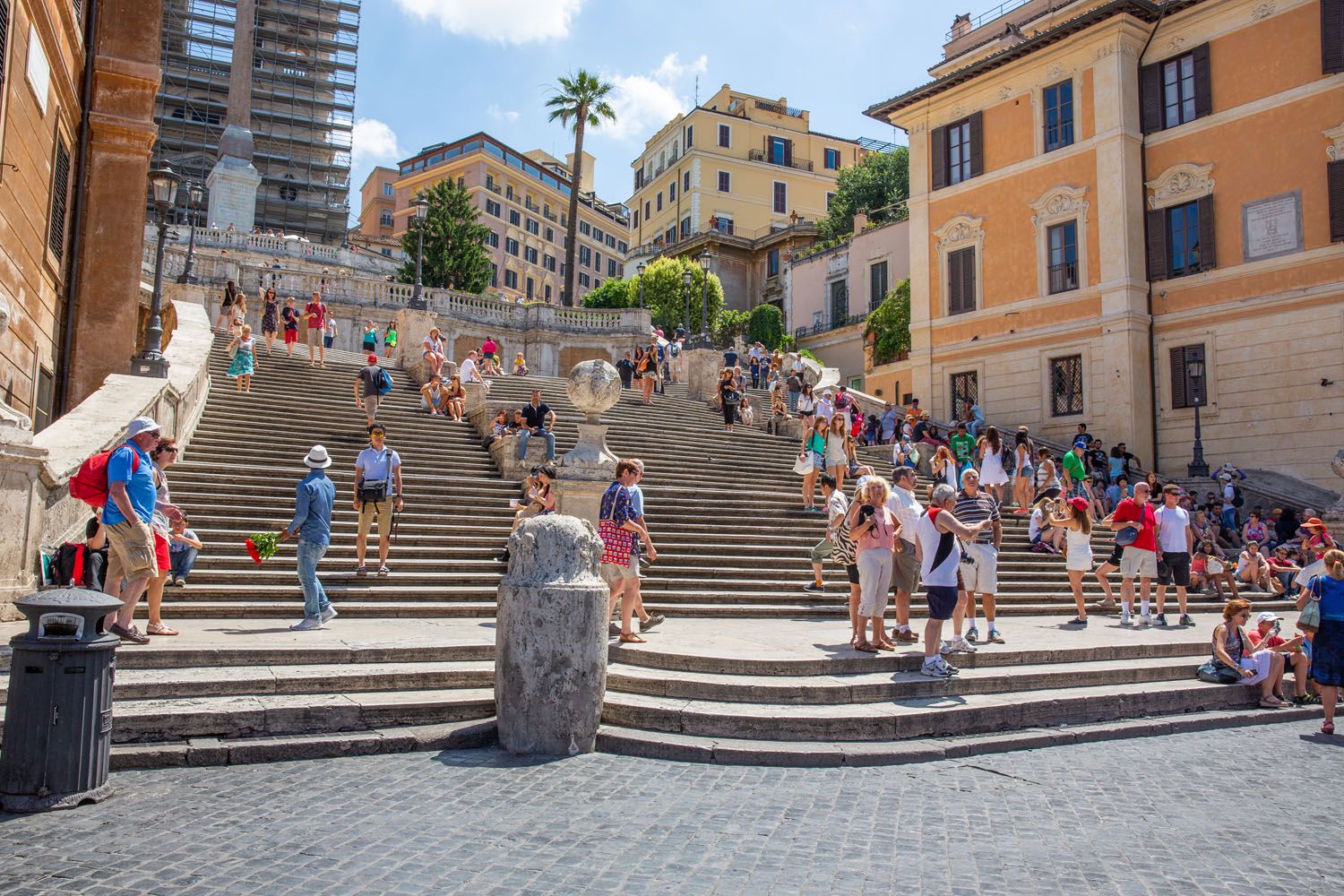
Spanish Steps
At the top of the steps is Trinita dei Monti. From here, it’s a nice view back out over the Spanish Steps and over the rooftops of Rome.
PRO TRAVEL TIP: Tired and need a break? Think twice about having a seat on the Spanish Steps. In 2019, a new law was put in place to crack down on “bad behavior” in Rome. If you are caught sitting on the Spanish Steps, you risk paying a €400 fine.
If you prefer to walk the streets of Rome with a guide, this afternoon walking tour includes the Spanish Steps, the Trevi Fountain, the Pantheon, and Piazza Navona.
6:15 pm: Aperitif and Dinner
Dinner in Rome does not typically start until 7 pm. That gives you some free time. You can either return to your hotel for a little bit or visit a nearby rooftop bar for a aperitif and another nice view of Rome.
Just a one-minute walk from the top of the Spanish Steps is Cielo Terrace, which is on top of the Rocco Forte Hotel de la Ville. They serve both aperitifs and dinner, so you could stay for dinner.
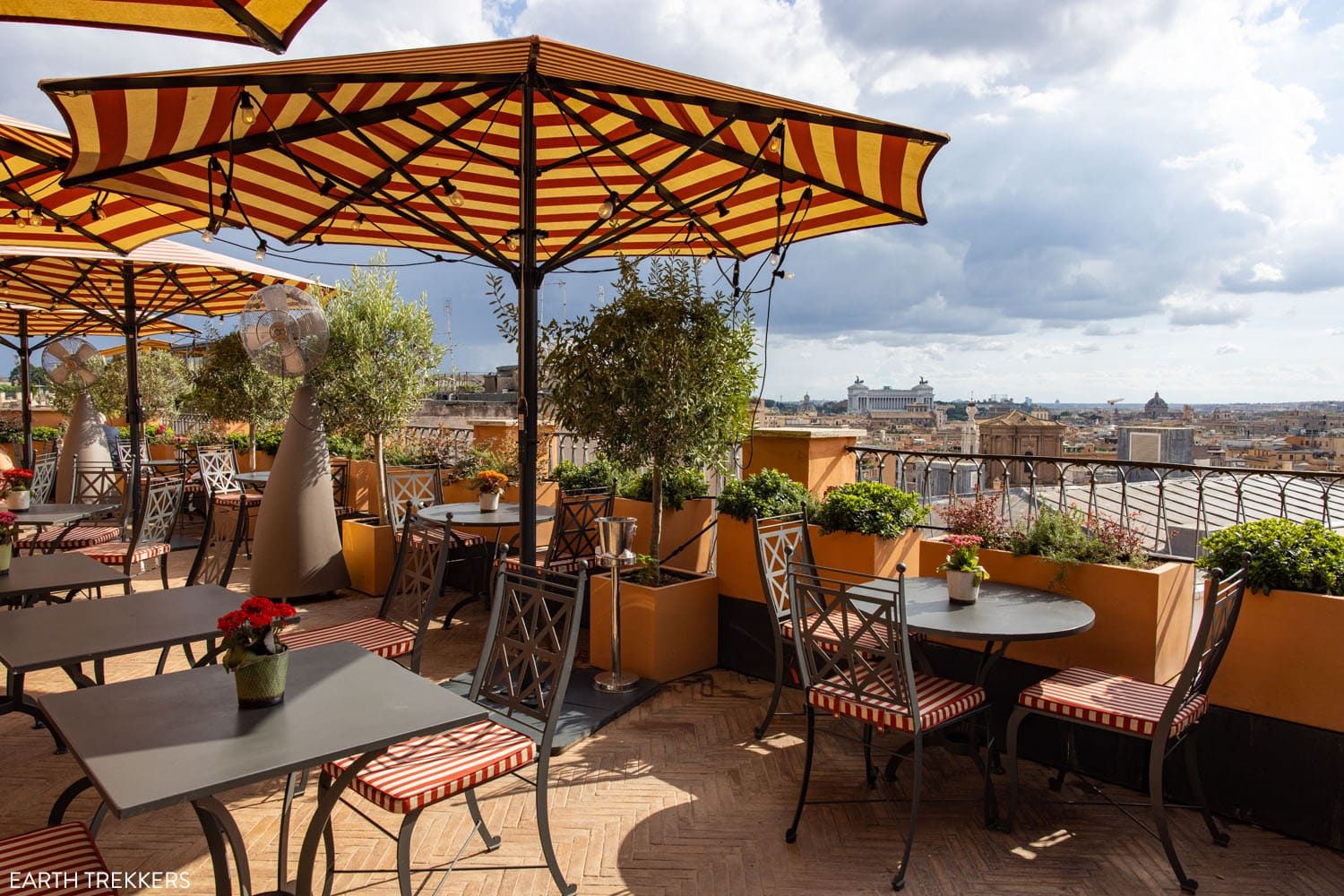
Cielo Terrace
Almost next door to Cielo Terrace is Imàgo, a Michelin-starred restaurant with amazing views over Rome. If you like the idea of dining here, make your reservation at least one month in advance.
For dinner, you can stay at Cielo Terrace or have dinner elsewhere. Trastevere is a great place to go for dinner. The best way to get here from the Spanish Steps is to take a taxi. For recommendations on where to eat, not only in Trastevere but elsewhere in Rome, take a look at our Rome Restaurant Guide.
Rome Itinerary Day 2
Vatican City & the Borghese Gallery
The first half of the day will be spent touring the Vatican Museums, the Sistine Chapel, and St. Peter’s Basilica. Then it is a scenic walk along the Tiber River to the Villa Borghese Gardens. The day ends with a visit to one of the most important art galleries in the world.
If you are not into art, the Borghese Gallery is still worth it, in our opinion. However, if you want to skip it, you can use your free time to enter Castel Sant’Angelo or spend the afternoon in Trastevere.
Morning (7:30/8:00 am): Vatican City
12:00 pm: Lunch
1:30 pm: Scenic walk along Tiber River
2:30 pm: Borghese Gallery
5:00 pm: Free time and dinner
Morning: Vatican City
Vatican City is the smallest country in the world. In Vatican City, there are three big sites to visit: the Vatican Museums, the Sistine Chapel, and St. Peter’s Basilica.
There are several ways to visit Vatican City. You can take a guided tour or visit it independently. We have visited Vatican City independently and on a tour. Taking a tour is more expensive but has several advantages.
Taking a tour is much more educational, as a knowledgeable guide will teach you about important sights within the museums and concentrate on the most important things to see. Some tours take you right from the Sistine Chapel into St. Peter’s Basilica, which can save you an hour or longer. Yes, a tour is more expensive, but skipping that line is well worth the extra money.
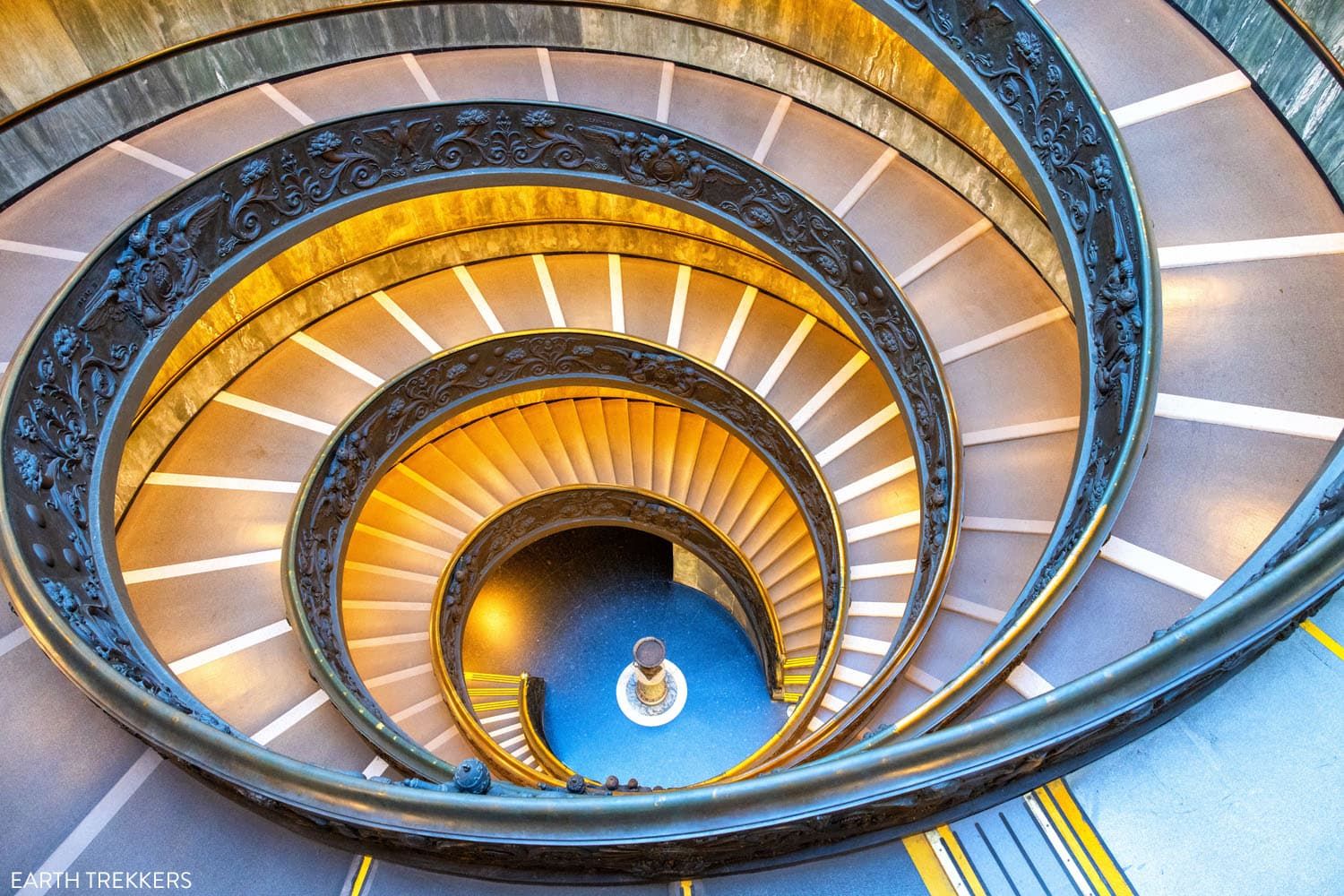
The modern Bramante Staircase in the Vatican Museums
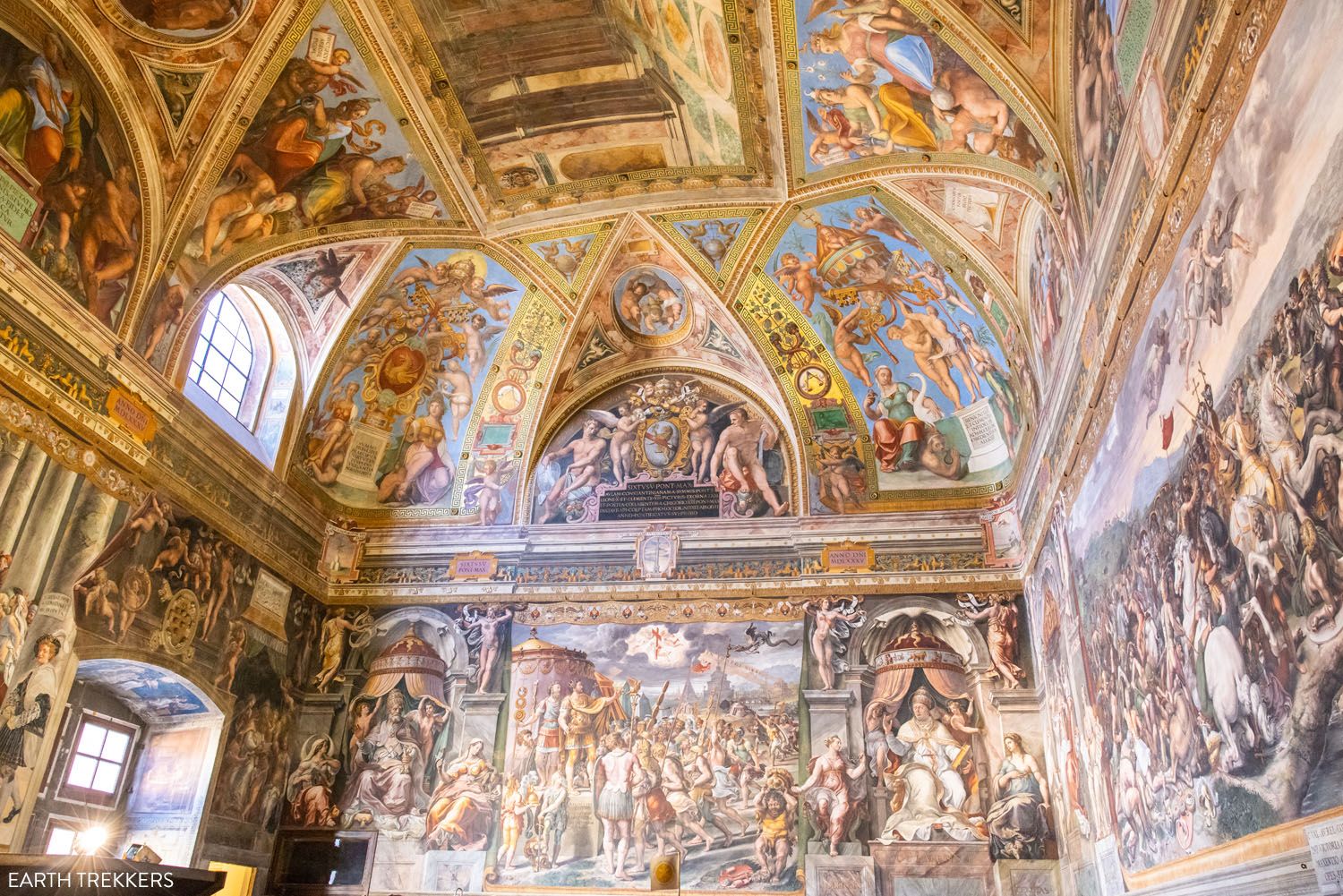
Room of the Immaculate Conception in the Vatican Museums
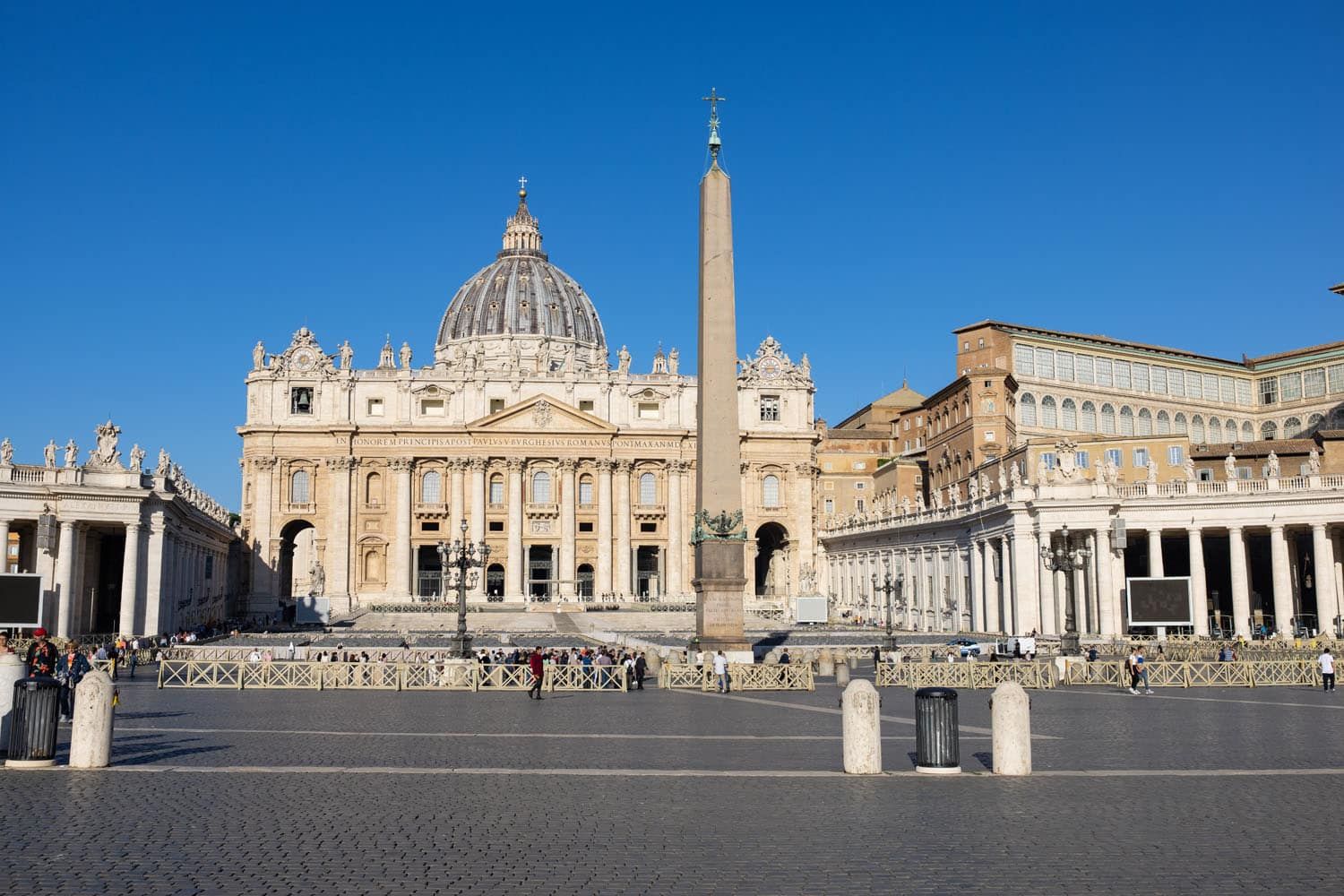
St. Peter’s Square
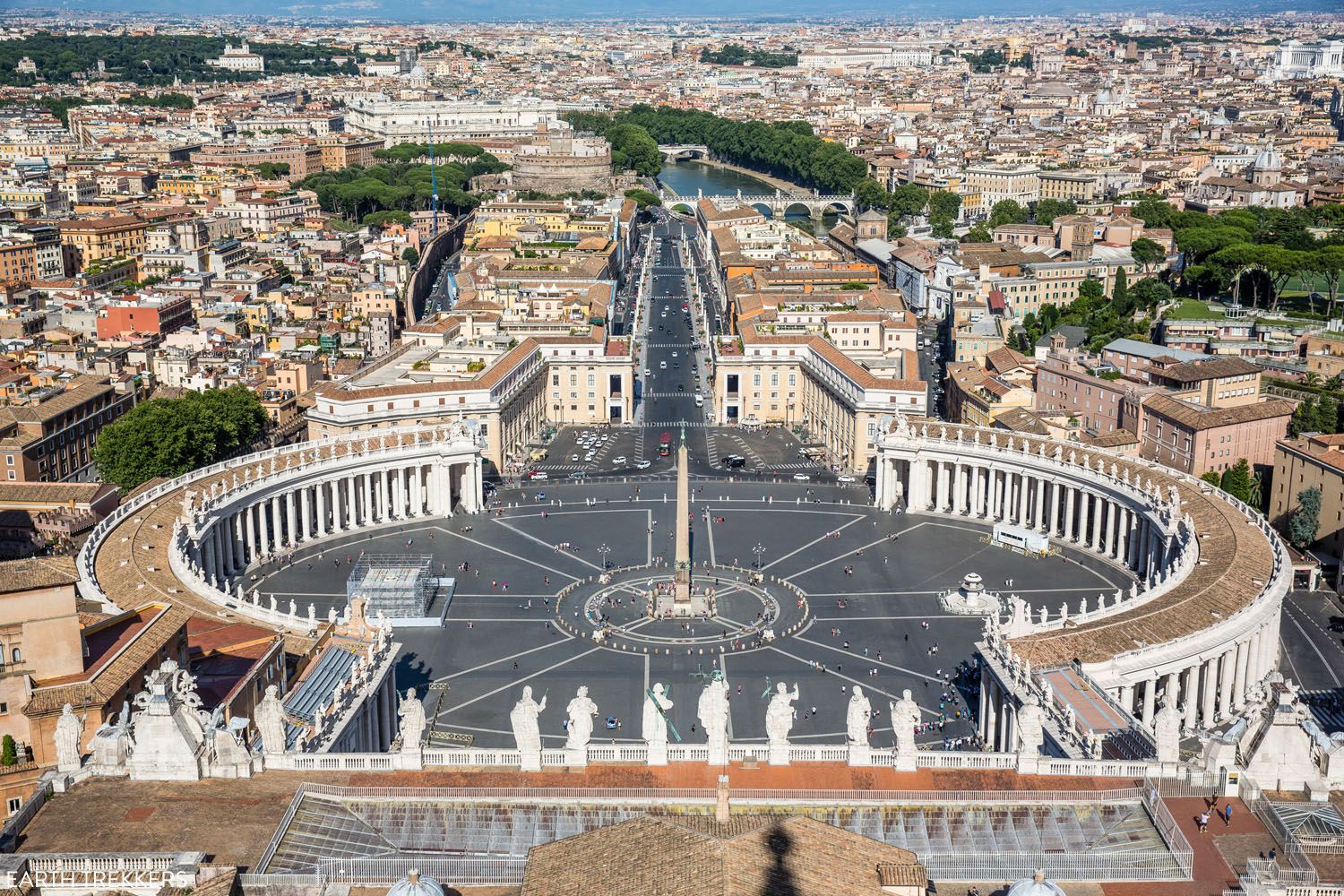
The view of Rome from the dome of St. Peter’s Basilica
Here are three different ways to spend your time at Vatican City this morning:
BEST OPTION: Early morning guided tour of Vatican City
The Vatican Museums open at 9 am. On an early morning tour, you enter at 8 am, which allows you to see part of the museums with very low crowds. Some tours will take you directly into St. Peter’s Basilica via the tunnel from the Sistine Chapel, which bypasses the enormous line to enter the cathedral.
An early morning tour is pricier (on average you will spend about € 80 to €140 per person), but it is an all-around better experience. We recommend this early morning tour (it is with the same tour company we used).
CHEAPER TOUR OPTION: Guided Tour of Vatican City
The early morning tours of Vatican City are expensive, since you are paying for early access. You can save some money and still take a guided tour by choosing a tour that starts at 9 am, which is opening time of the museums.
This tour gets nothing but stellar reviews and includes the Vatican Museums, Sistine Chapel, and St. Peter’s Basilica.
CHEAPEST OPTION: On Your Own
At 8 am, go first to St. Peter’s Basilica. This early in the day, there should be little to no line to enter the cathedral. Once inside, do the dome climb first, then visit the rest of the cathedral (learn more about what to see and do in our Guide to Vatican City).
In advance (at least several weeks before your visit to Rome), book tickets for a 10 am entry into the Vatican Museums, and then tour the museums and Sistine Chapel on your own. The museums will be busy so be prepared for some crowds.
By putting St. Peter’s Basilica first, you get to skip the massive line to get through security. And since you have a timed entry ticket to enter the Vatican Museums, you get to bypass this ticket line. The key to making this work is getting to St. Peter’s Square early enough that there isn’t yet a line (8 am should be fine).
GUIDE TO VATICAN CITY: In our Guide to Vatican City, we cover hours, pricing, and helpful tips for your visit. You also have the option to add on the “secret rooms” of the Vatican, such as the Cabinet of Masks, and we cover these as well ↓
How to Visit the Vatican Museums & St. Peter’s Basilica
Detailed guide to the Vatican Museums, Sistine Chapel, and St. Peter’s Basilica.12:00 pm: Lunch
For lunch, we have three recommendations that are all within walking distance of St. Peter’s Square. You can either have a quick lunch or a longer, leisurely lunch.
We had a quick lunch at Alice Pizza, dining on pizza by the slice. It’s great if you are on a budget or are saving your money for dinner. Two restaurants we have not tried but sound amazing are Borghiciana Pastificio Artiginale and Scialla the Original Streetfood.
1:30 pm: Scenic Walk along the Tiber River
Stroll along Via della Conciliazione towards Castel Sant’Angelo (and look back several times for the amazing view of St. Peter’s Basilica).
Turn right onto Via San Pio X and cross the Tiber River on Ponte Vittorio Emanuele II. From this bridge, you get a beautiful view of the Castel Sant’Angelo and Ponte Sant’Angelo.
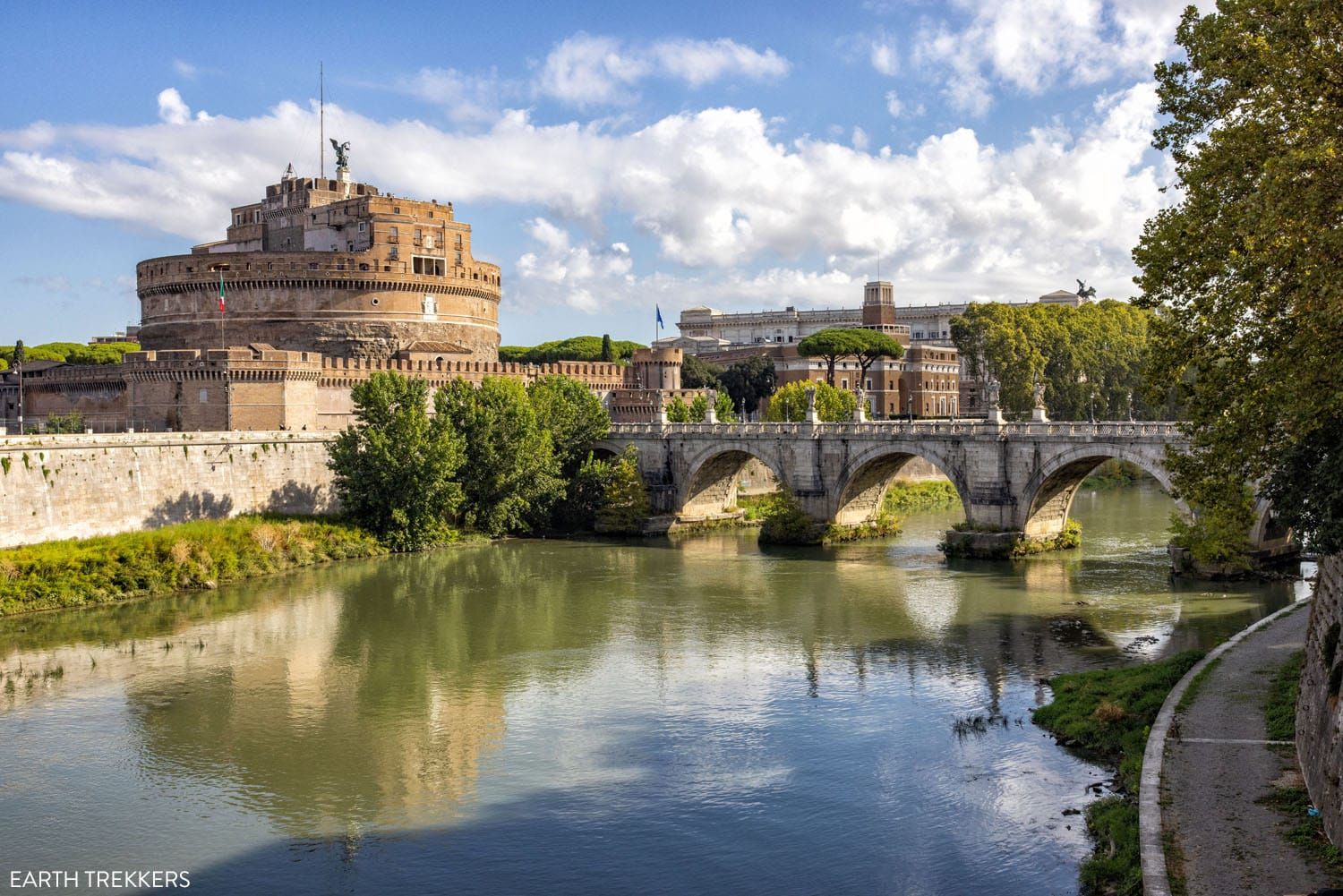
The view from Ponte Vittorio Emanuele II
Stay on the south side of the Tiber River, walking underneath of the trees that line the river. You will get two more very nice views from Ponte Sant’Angelo and Ponte Umberto I.
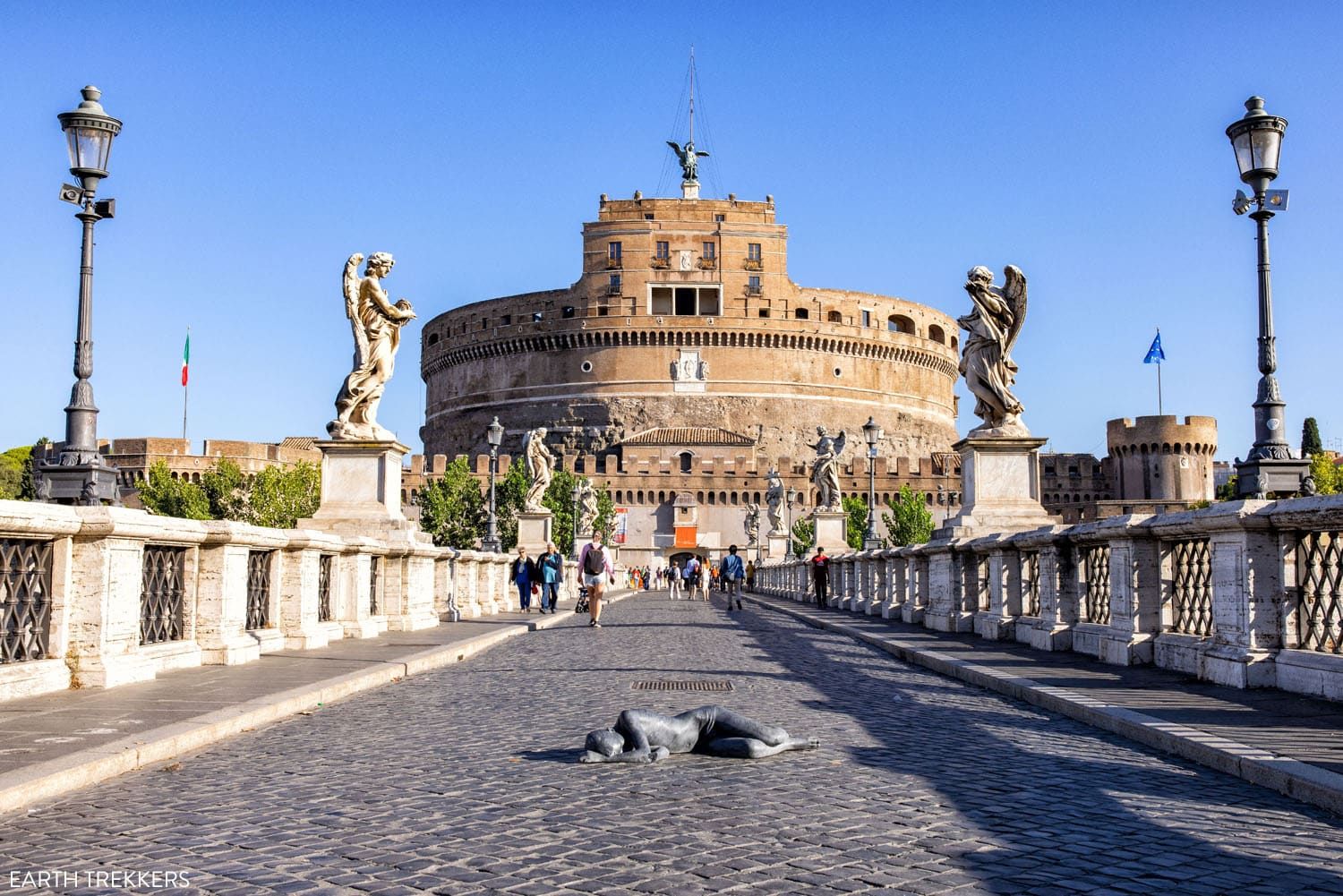
Castel Sant’Angelo and Ponte Sant’Angelo
Continue the walk along the Tiber River, and once you get to Ponte Cavour, walk up Via di Ripetta until you get to Piazza del Popolo. This walk from St. Peter’s Square to Piazza del Popolo is 2.5 km/1.5 miles and takes 30 minutes.
This large piazza is flanked by three basilicas. In the center sits the Flaminio Obelisk, an Egyptian obelisk of Sety I. This obelisk was brought to Rome in 10 BC and erected in this square in 1589.
For the best view of Piazza del Popolo, cross the square and climb the steps to Terrazza del Pincio in the Villa Borghese Gardens. Here is the view:
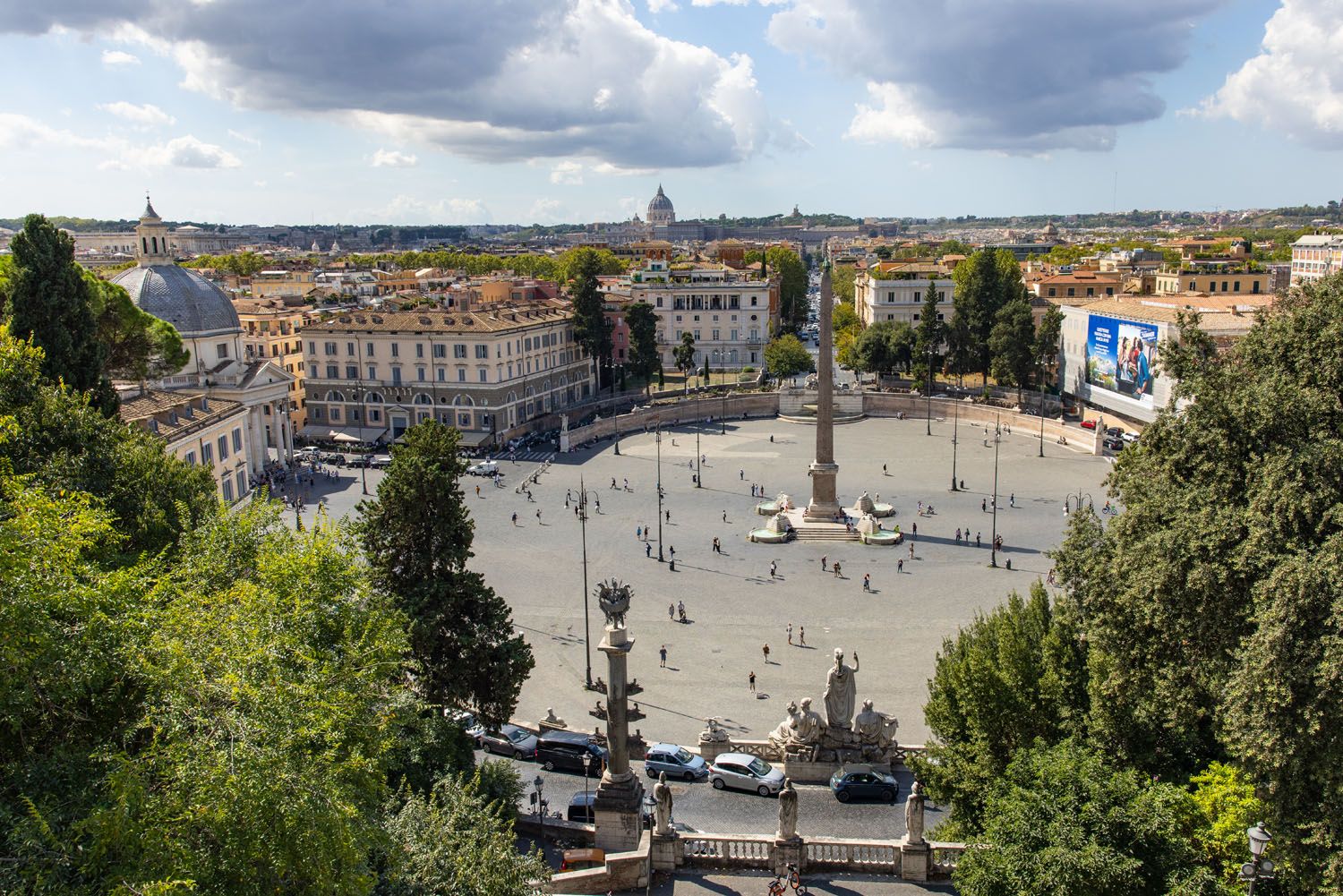
Piazza del Popolo from Pincio Terrace, which is in the Villa Borghese Gardens.
2:30 pm: Borghese Gallery
Even if you are not a big fan of art museums, or even just museums in general, the Borghese Gallery is still worth the visit. This art museum contains one of the best collections of art in the world. See works of art by Raphael, Caravaggio, Titian, and Bernini. Even the building is an attraction.
To get here, stroll through the Villa Borghese Gardens. The gardens are quite large and you will have to walk from one side to the other, which takes about 20 minutes.
At 2:30 pm, collect your tickets. For this itinerary, I recommend making a 3 pm reservation to visit the Borghese Gallery.
PRO TRAVEL TIP: It’s a long walk from Vatican City to the Borghese Gallery (about 4 km/2.5 miles) so this is not for everyone. You can save some steps by walking to Castel Sant’Angelo for the views, then hire a taxi from Stazione Taxi San Pietro, which is at the intersection of Via della Conciliazione and Via San Pio X. Take the taxi directly to the Borghese Gallery. This will get you there faster so make an earlier time slot reservation or spend your time strolling through the gardens.
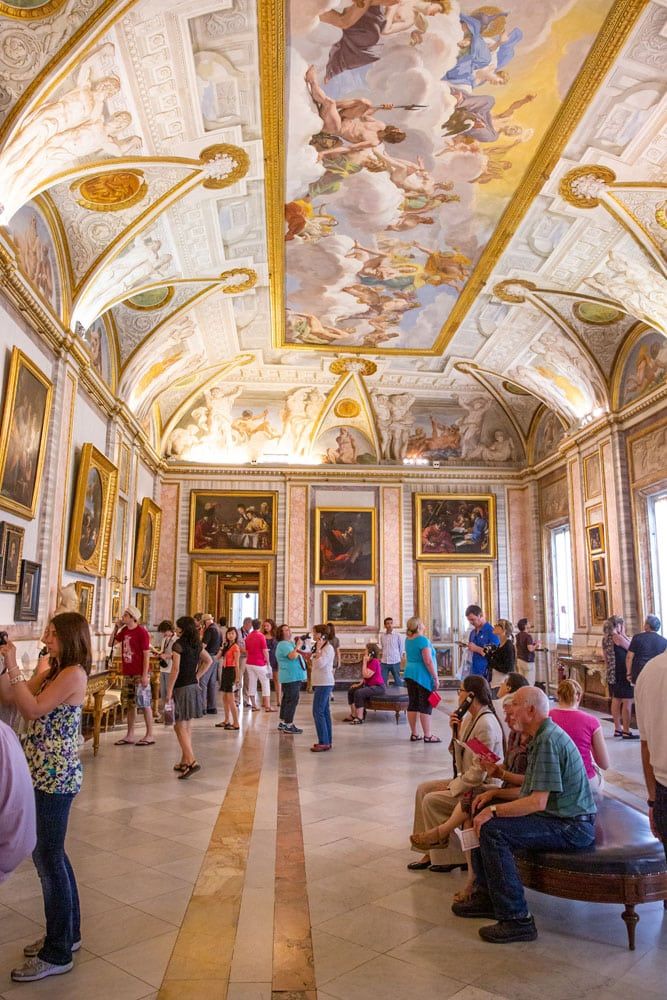
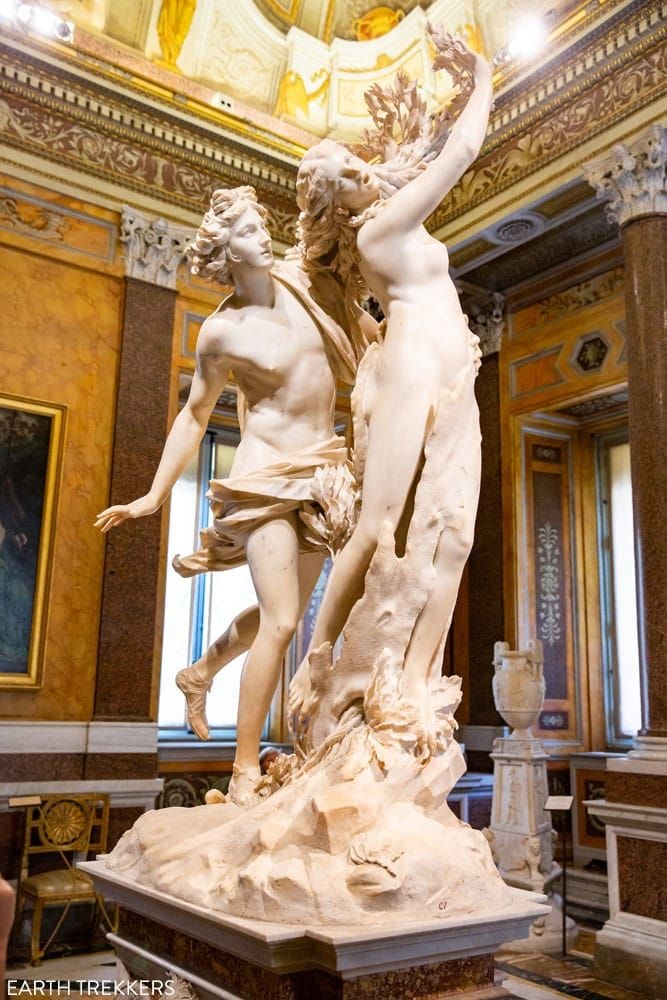
Borghese Gallery
How to Visit the Borghese Gallery
You can only visit the Borghese Art Gallery with a reservation. Reservations can be made up to 3 months in advance. Reservations are made for two-hour time slots, starting at 9 am, and the last time slot is at 5 pm.
You can make your reservation online or call +39 06 32810. There is a €2 fee for making online reservations. Tickets can also be purchased through GetYourGuide, which includes a guided tour of Borghese Gardens. This is a great option if you want to visit the museum with a guide or where unable to purchase tickets on the official website.
Collect your tickets a half an hour before your time slot. For a 3 pm reservation, plan on arriving no later than 2:30 pm. If you arrive late, even 5 minutes late, they may turn you away. We saw this happen to other people who arrived late for their reservation.
Hours: 9 am – 7 pm
Closed Mondays
Cost: €13, prices can increase during special exhibits, +€2 reservation fee
Website: www.galleriaborghese.it
Nearest Metro Station: Barberini
5:00 pm: Free Time & Dinner
This afternoon and evening, here are three recommendations on how to spend your time.
Crypt of the Capuchin Friars
From the Borghese Gallery, it is a 20 minute walk to the Crypt of the Capuchin Friars.
In several small chapels underneath the church of Santa Maria della Concezione dei Cappucchini are the skeletal remains of almost 4,000 Capuchin friars. The bones are arranged in artistic patterns. It’s morbidly fascinating and definitely an off-the-beaten-path location (unfortunately, photography is not allowed, which is why we don’t have any photos). Get pricing and hours here.
It is conveniently located near the Barberini metro station so you can get to your hotel or dinner restaurant on the metro.
Rooftop Bar
Spend the late afternoon at a rooftop bar followed by dinner. Our favorites are Oro Bistrot, AcquaRoof Terrazza Molinari, and Divinity Rooftop. These each also serve dinner. Learn more about them and see a longer list in our guide to the Rome Rooftop Bars.
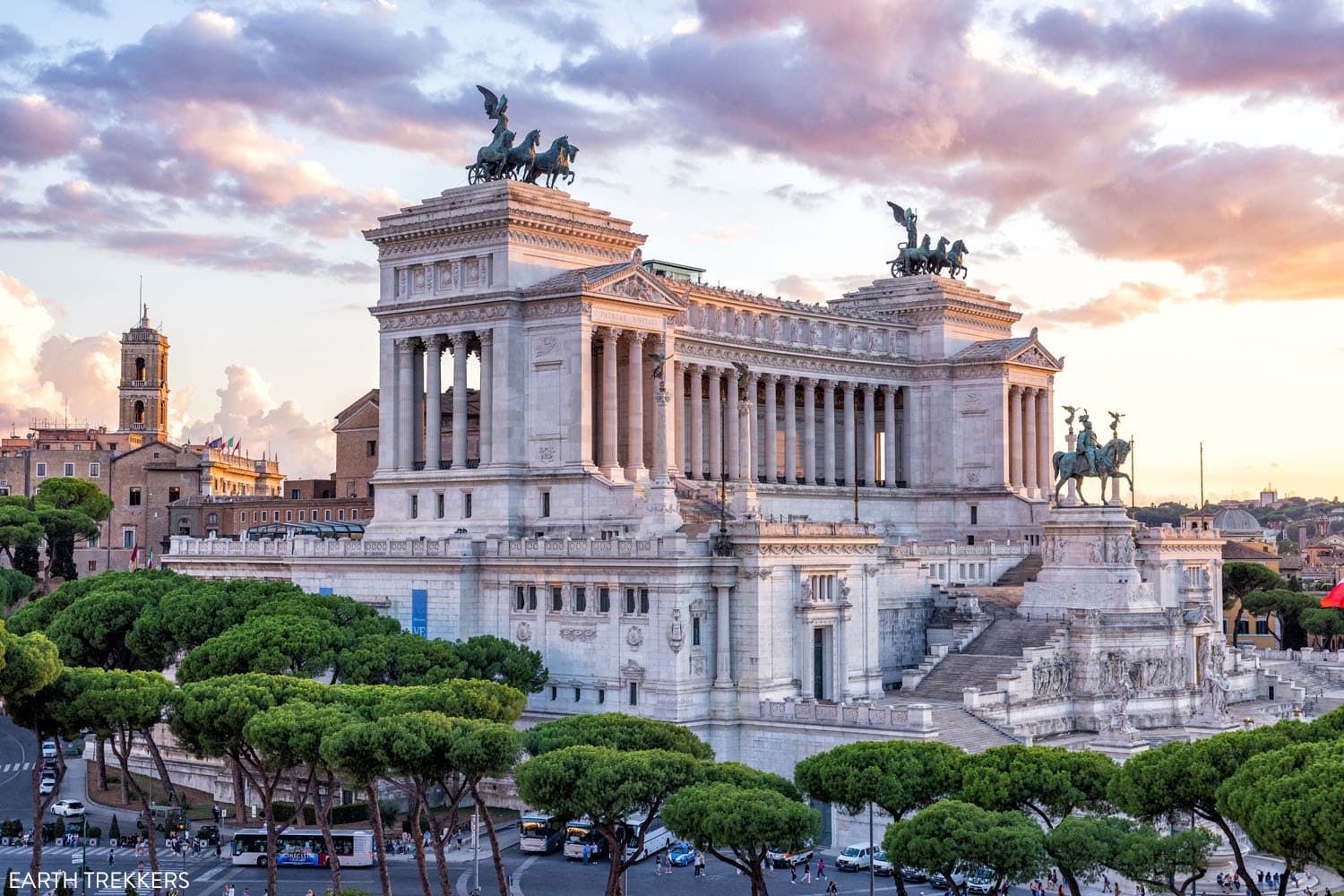
The view from Oro Bistrot at sunset
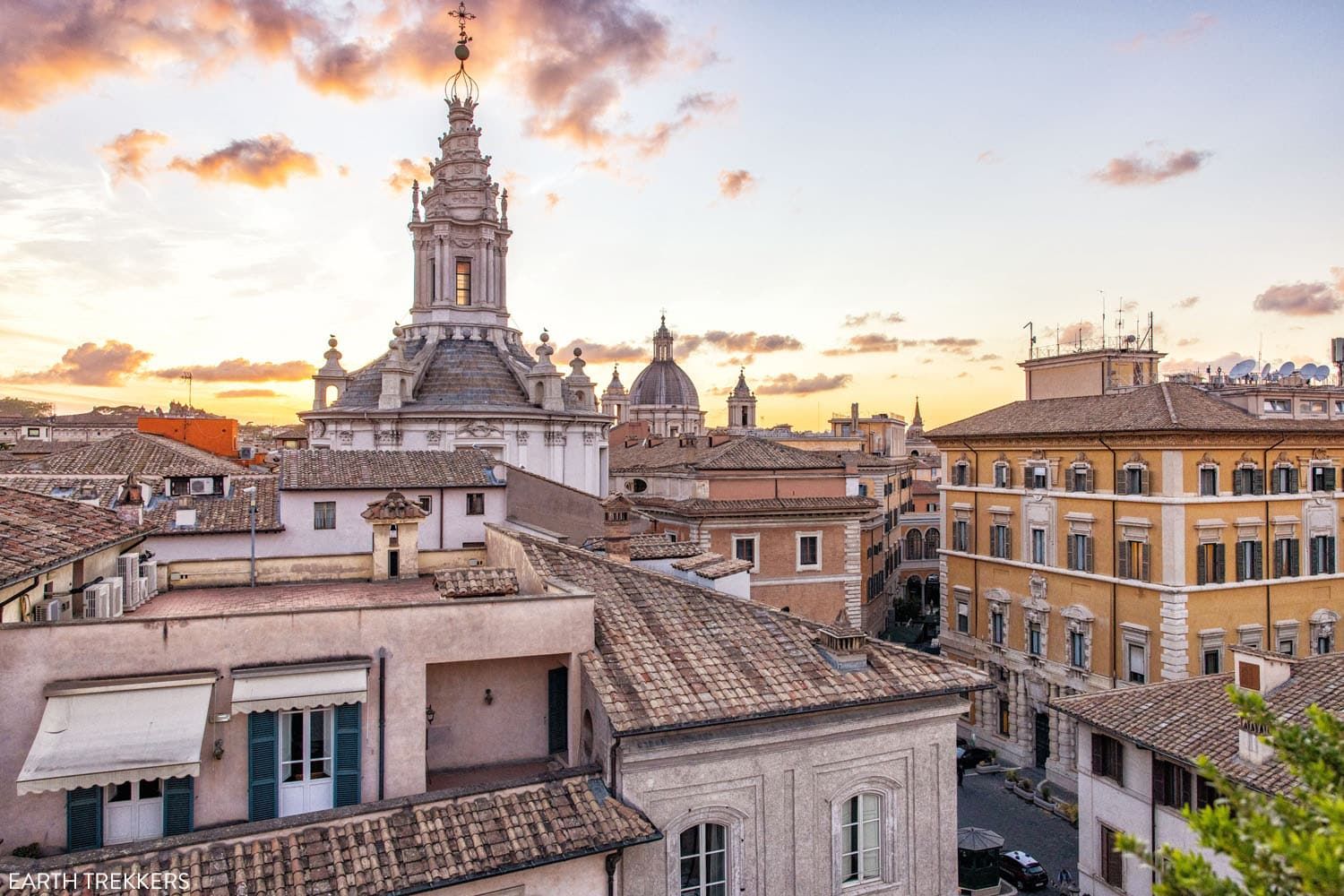
The view from Divinity Restaurant and Lounge
Leisurely Time & Dinner
Return to your hotel, relax for a few hours, and then go out to dinner. If you did not go to Trastevere last night, tonight is a great time to go.
Are the Travel Passes Worth It?
Roma Pass
The Roma Pass is a card that offers reduced prices into many sites in Rome and unlimited access to the public transportation network. The 48-hour pass gives you free access into your first site and the 72-hour pass gives you free access into your first two sites.
Price of the Roma Pass:
- 48 Hours: €36.50
- 72 Hours: €58.50
If you follow this Rome itinerary, the Roma Pass is not worth it. The savings are minimal and the Roma Pass makes scheduling your Borghese reservations unnecessarily complicated. With the new rules, you now also have to schedule your time slot for the Colosseum in advance. If time slots for the Colosseum are sold out for your dates of travel, you will not be able to enter with the Roma Pass, since a time slot is mandatory (you will have to join a tour).
With the Roma Pass, when you visit the Colosseum, you still need to wait in line to pick up your tickets. If you are visiting Rome during peak season, it’s worth it to pay a few extra euros and buy your Colosseum tickets in advance via the official website (and skip the Roma Pass). This could save you time waiting in line.
To learn more about the Roma Pass: www.romapass.it
Omnia Card & Turbo Pass
The Omnia Card and Turbo Pass are two travel cards that even more expensive and offer no savings on this itinerary.
Our recommendation is to book your tickets to the Colosseum, the Vatican, and the Borghese Gallery in advance on the official websites. Print your tickets at home and now you have skip-the-line access into each of these sites. If tickets are not available for your dates of travel, join a skip-the-line tour.
How to Get Around Rome
The majority of the must-see sights in Rome are located in central Rome. It’s possible to get around mainly by walking, but you can save your steps, and a little bit of time, by also using the Rome metro or taking a taxi.
Taxi stands are set up throughout the city. On Google Maps, you can search “taxi stand” for the ones closest to your location. Then you get in the taxi first in line and tell them your next destination. We frequently do this and in 2022, every taxi we took used credit cards (but it is good to have some cash on hand as a back up). To tip the taxi driver, we added on 1 to 2 euros to the fare.
You can also use Uber but we ended up spending a lot of time waiting for the Uber to arrive and figured out it was quicker to walk to the closest taxi stand.
The metro is fast, cheap, and easy to use. It’s a lot more economical than a taxi. Just beware of pick pockets on the metro and in other crowded places throughout Rome.
Best Time to Visit Rome
Spring and fall are the best times of the year to visit Rome. During this time, the weather is great for sightseeing and crowds tend to be lower than the busy summer months. But here is a breakdown by season of what you can expect in Rome:
WINTER: It’s chilly in Rome during the winter months. Daytime high’s average around 13°C (55°F) and it is a little colder at night. Rainfall is slightly above average for the year (averaging about 7 days of rain per month in December, January, and February).
SPRING: In early spring, the high temperature is 16°C (60°F) and it continues to get warmer week by week, reaching an average high of 27°C (80°F) by June. Rainfall chances go down the closer you get to the summer months. May and June have warm weather and lower chances of rain than the fall and winter months.
SUMMER: Expect the biggest crowds of the year and hot weather during the summer months. Daily high temperatures average 31°C (87°F) but they can easily get up to 35°C (95°F). Rainfall is the lowest of the year. If you plan to visit in the summer months, make your hotel reservations far in advance as well as your entrance tickets into the museums.
FALL: In early fall, crowds can still be high, not really quieting down until the end of October. Daytime high’s range from 26°C (79°F) in early fall and cooling off to 17°C (62°F) by late fall. Autumn is the wettest time to visit Rome (mid-September through early December with rainfall peaking in November), so bring an umbrella if you plan to be here at this time.
VERDICT: The best time to visit Rome is May through mid-June. The weather is nice and crowds are manageable.
Where to Stay in Rome
For recommendations on where to stay, read our Best Hotels and Neighborhoods Guide for Rome. Learn where to stay for a great view of the Colosseum and Piazza Navona and get recommendations whether you are looking for a budget hotel, luxury hotel, or if you are traveling as a family.
Where to Stay in Rome 2025 – Best Hotels & Neighborhoods
Best locations in Rome, with recommendations based on your budget and travel style.Where to Eat in Rome
We listed several recommendations in this itinerary, but for a bigger list of recommended restaurants, take a look at our Rome Restaurant Guide. And for rooftop bars, take a look at our guide about the Rome Rooftop Bars.
Tours of Rome
Looking for more ideas of how to spend your time? These tours can easily be added to this Rome itinerary. Take a food tour, a cooking class, or tour the Colosseum at night.
Tours of Rome
Frequently Asked Questions
How much time do you need in Rome?
Ideally, plan on spending two or more days in Rome. With 2 days, you have just enough time to visit all of Rome’s top attractions without cramming them into one very busy day. Even more time allows you to go off the beaten path, explore the underground sites and the Appian Way, visit a few neighborhoods, and sample some of Rome’s amazing restaurants.
What are the best things to do with 2 days in Rome?
If you have 2 days in Rome, the best things to do include the Colosseum, Roman Forum, enjoy the view from the Altar of the Fatherland, stroll through the heart of Rome, tour Vatican City, and visit the Borghese Gallery. Make sure you try pizza al taglio (pizza by the slice) and lots of gelato!
Is it possible to see Rome in one day?
Yes, with one well planned day you can visit the must-see sights in Rome, including the Colosseum, the Roman Forum, the Vatican Museums, St. Peter’s Basilica, the Trevi Fountain, the Pantheon, and Piazza Navona.
If you have any questions about this 2 days in Rome itinerary, let us know in the comment section below.
More Information for Your Trip to Italy
We have TONS more information about Italy in our Italy Travel Guide, including Rome, Florence, Venice, Tuscany, the Dolomites, the Amalfi Coast, the Cinque Terre, Sicily, and Puglia.
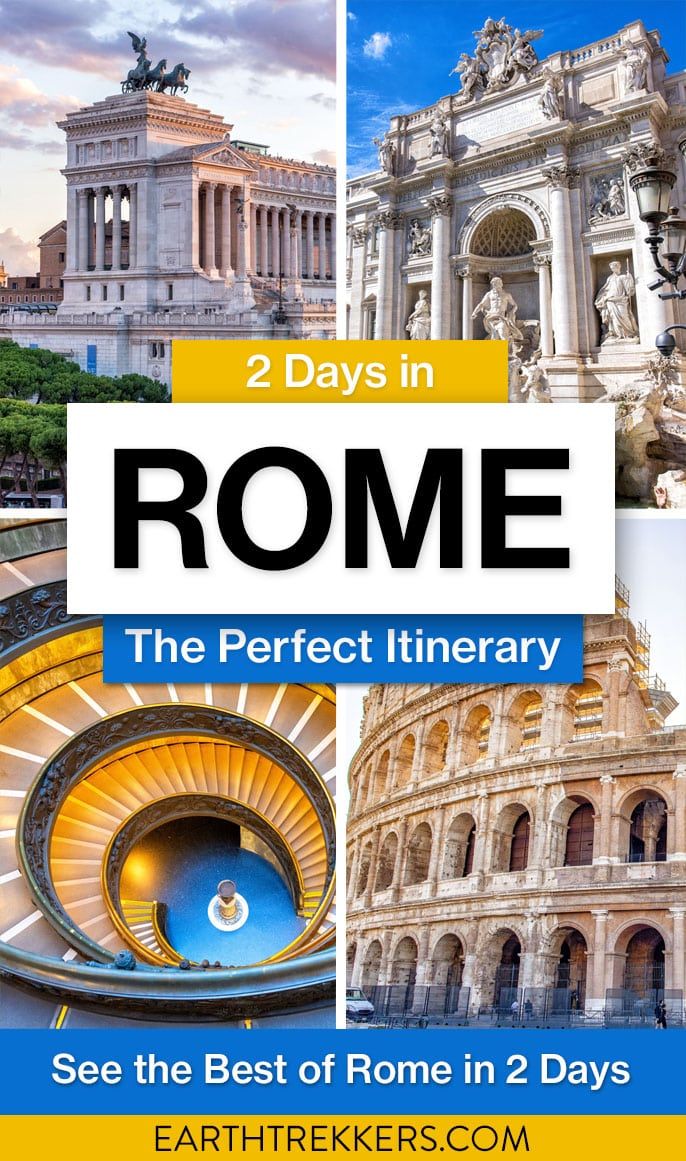
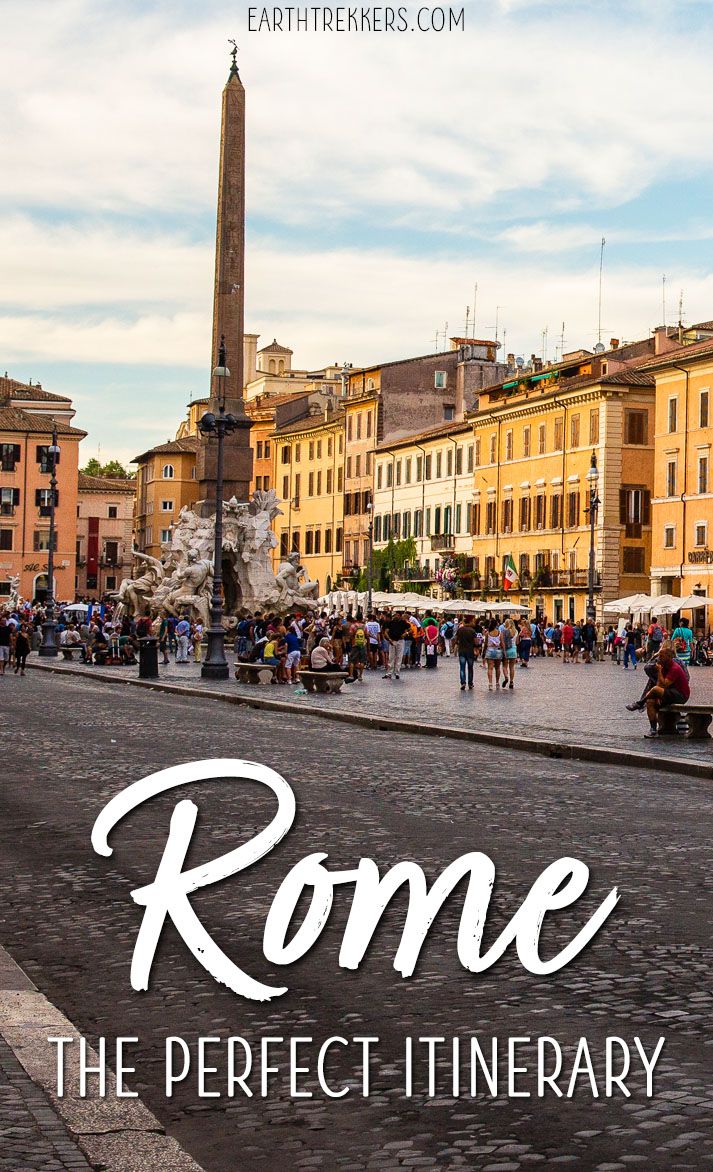
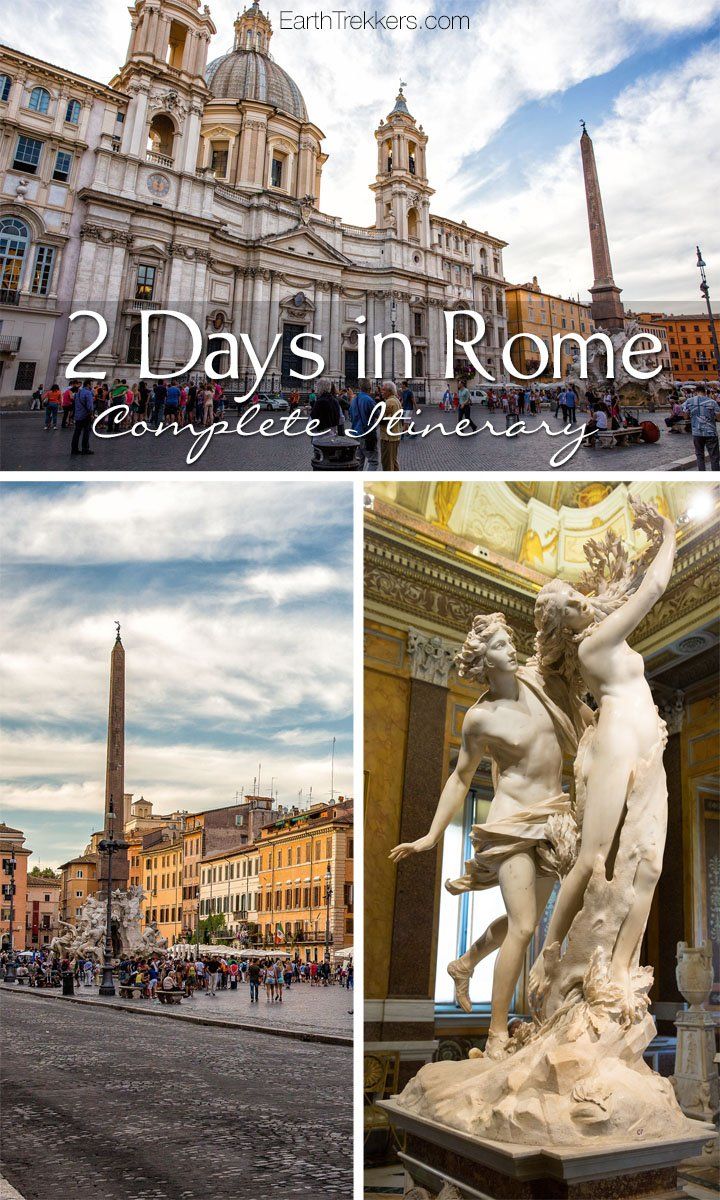
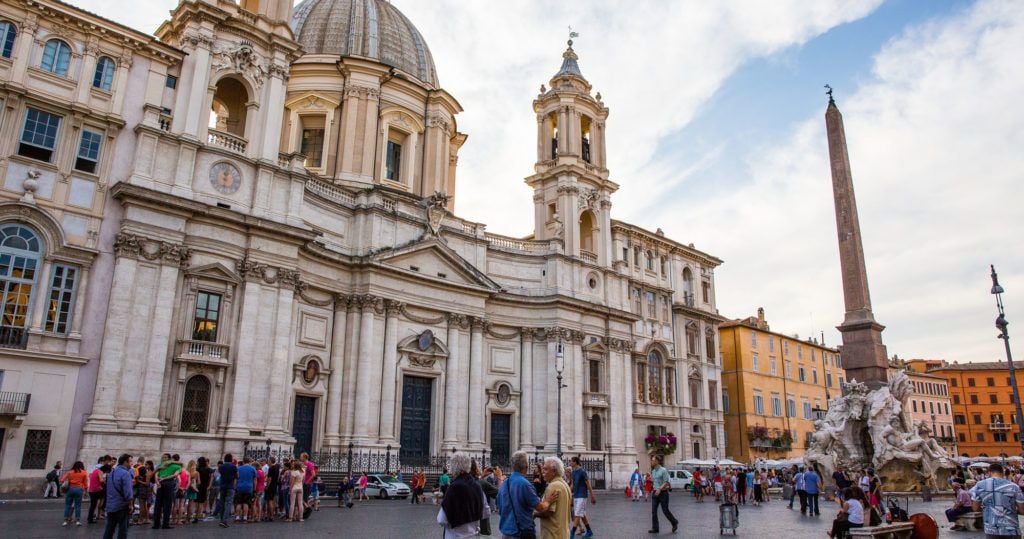
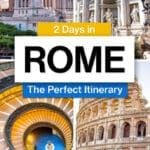
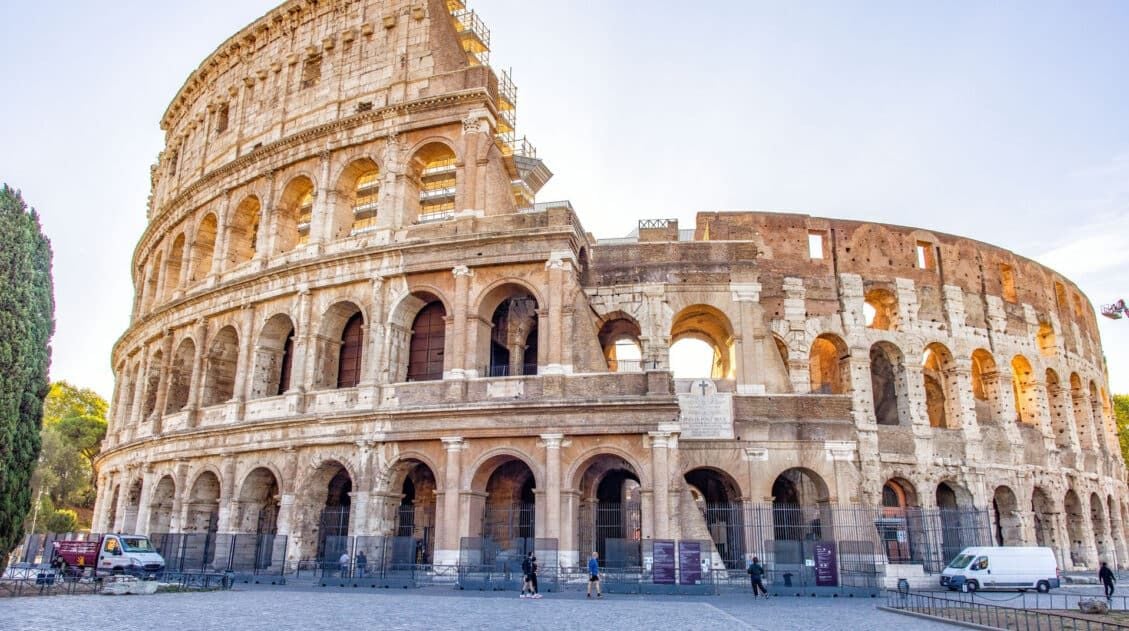
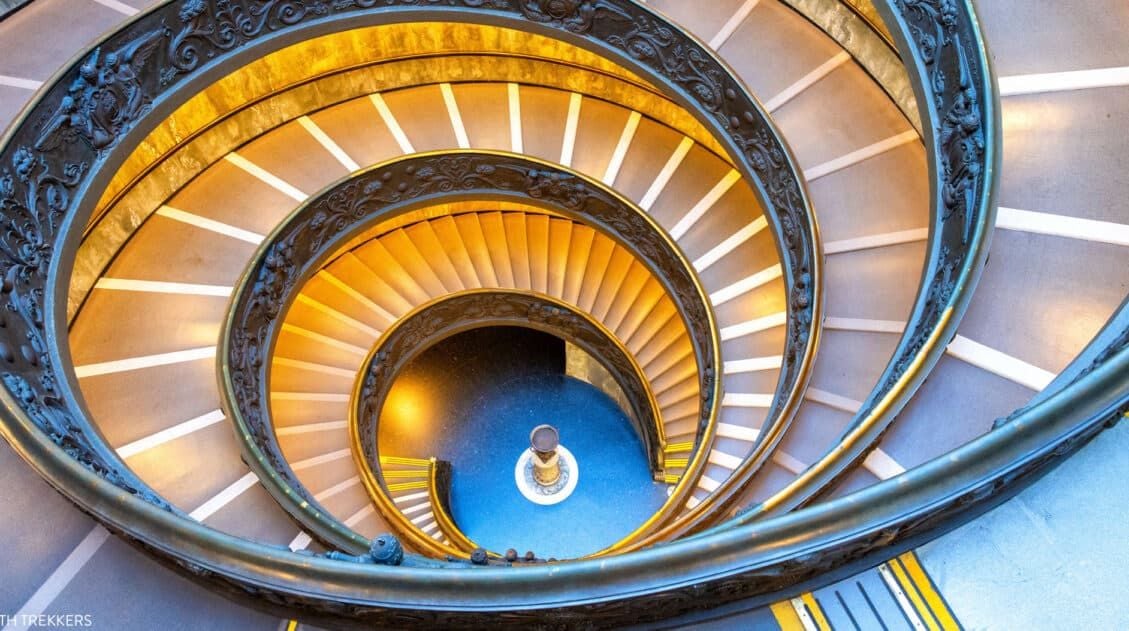
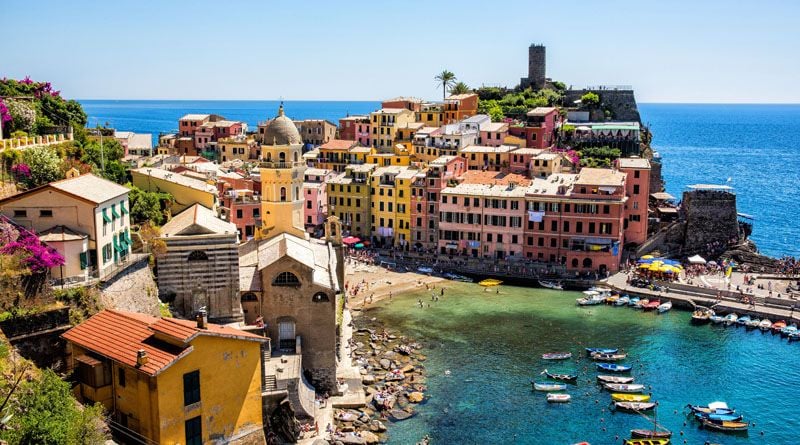
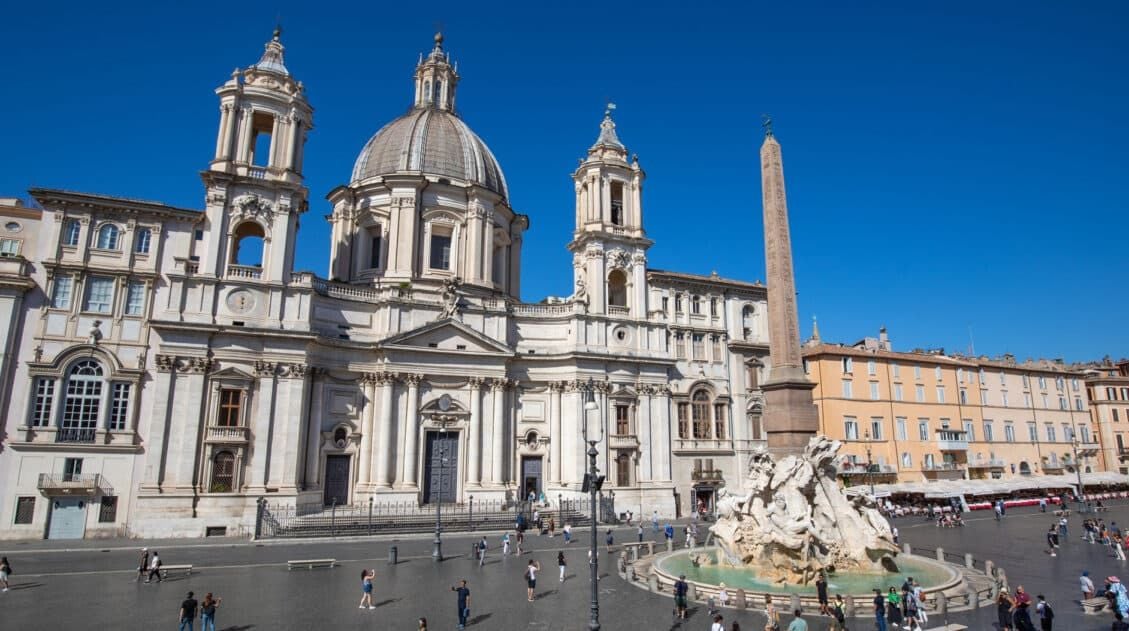
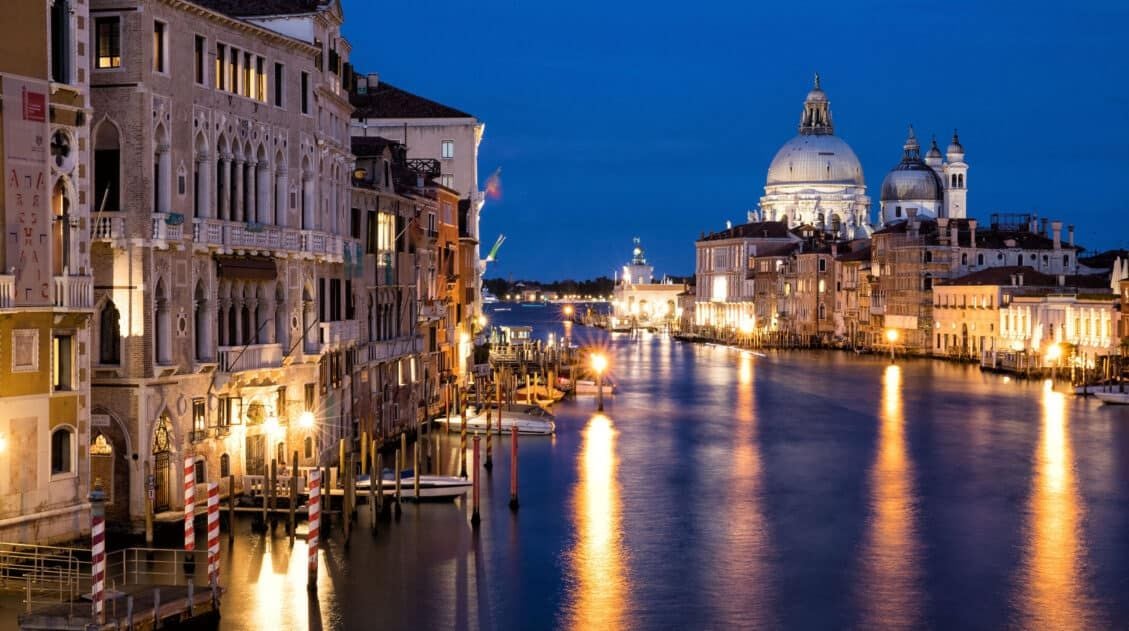
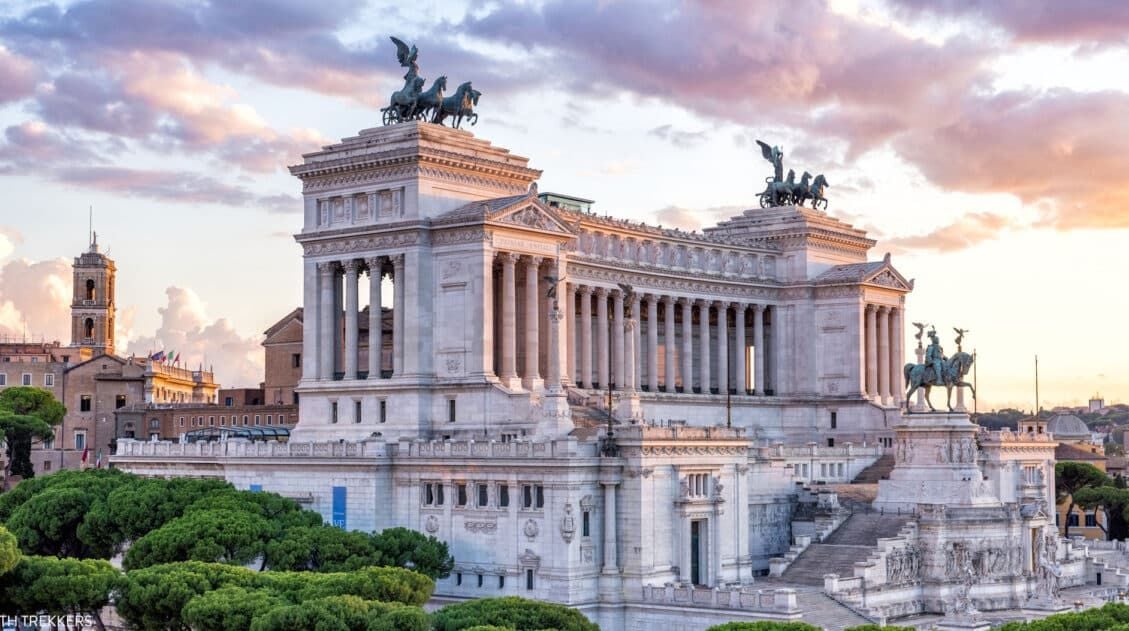
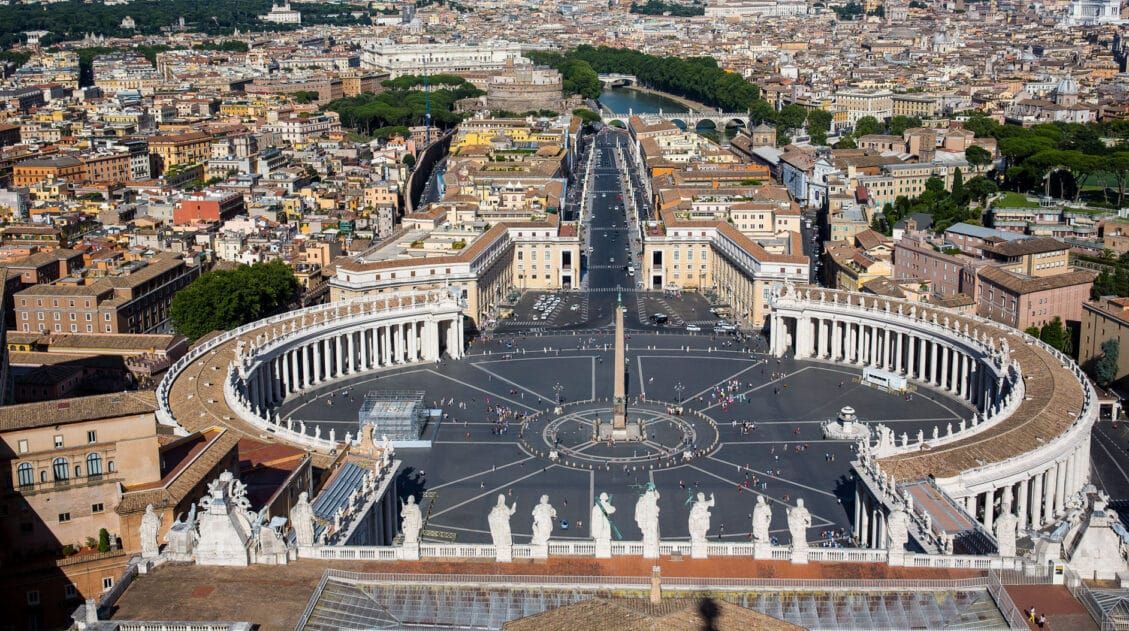
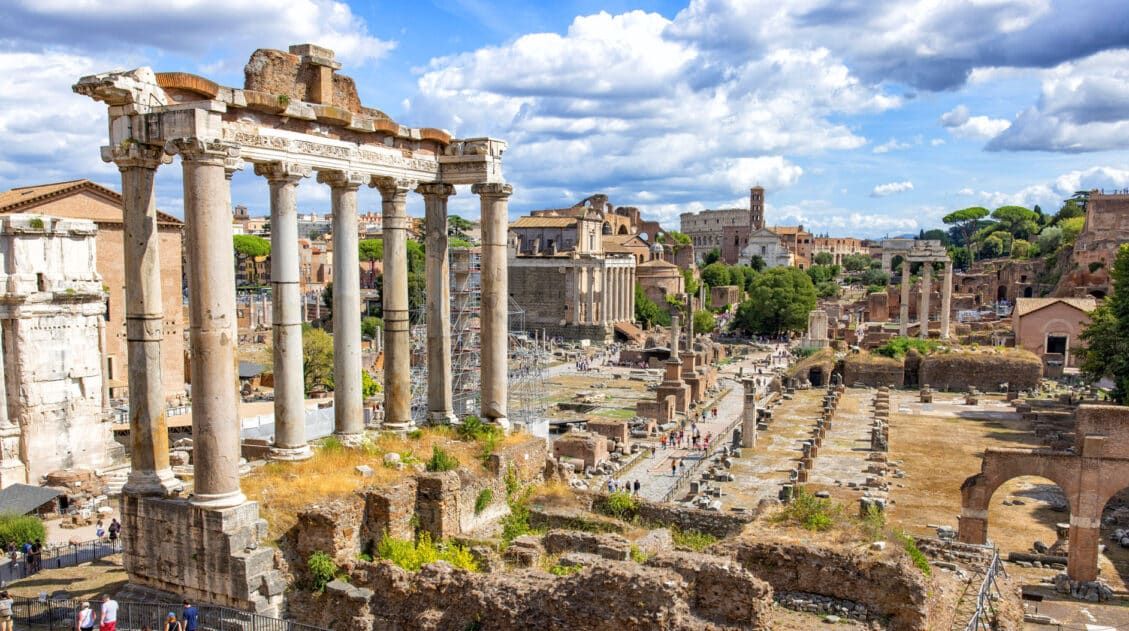
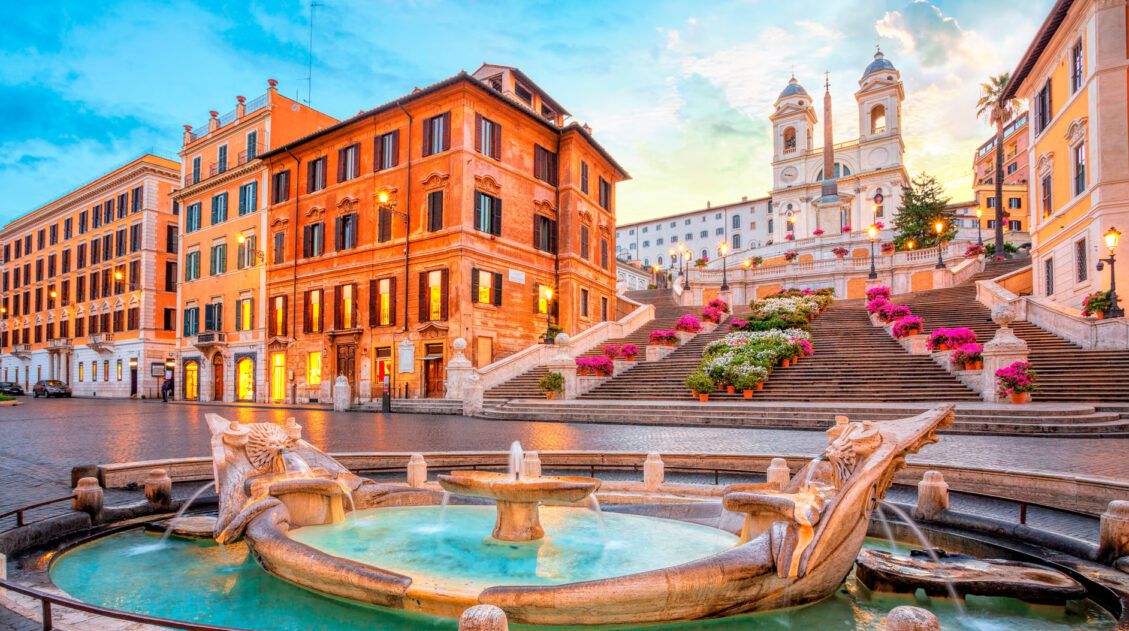

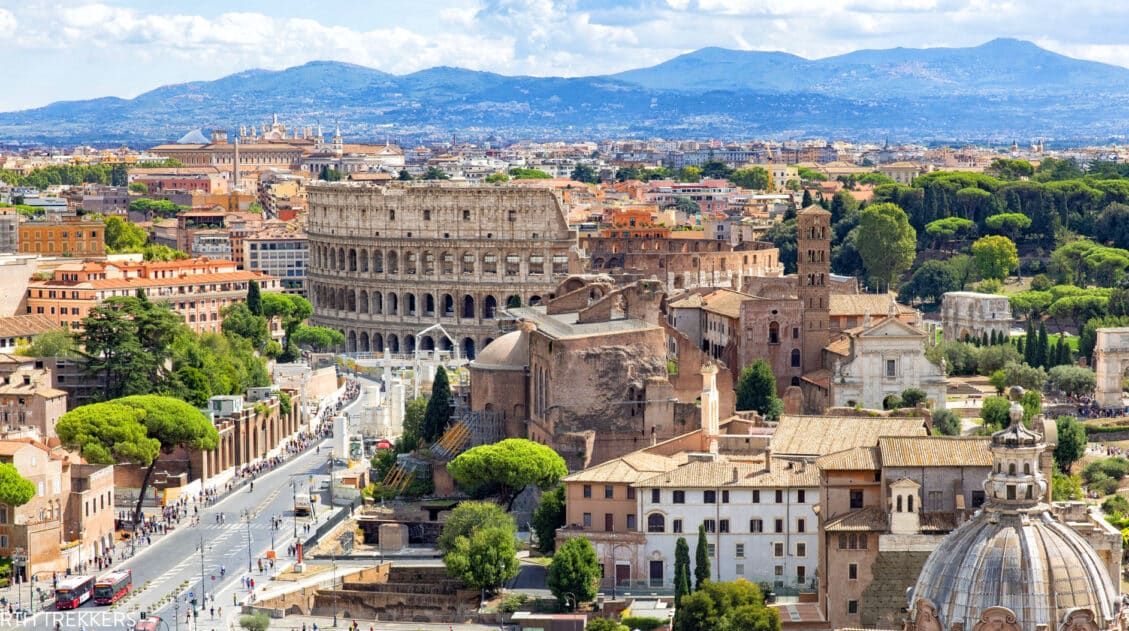
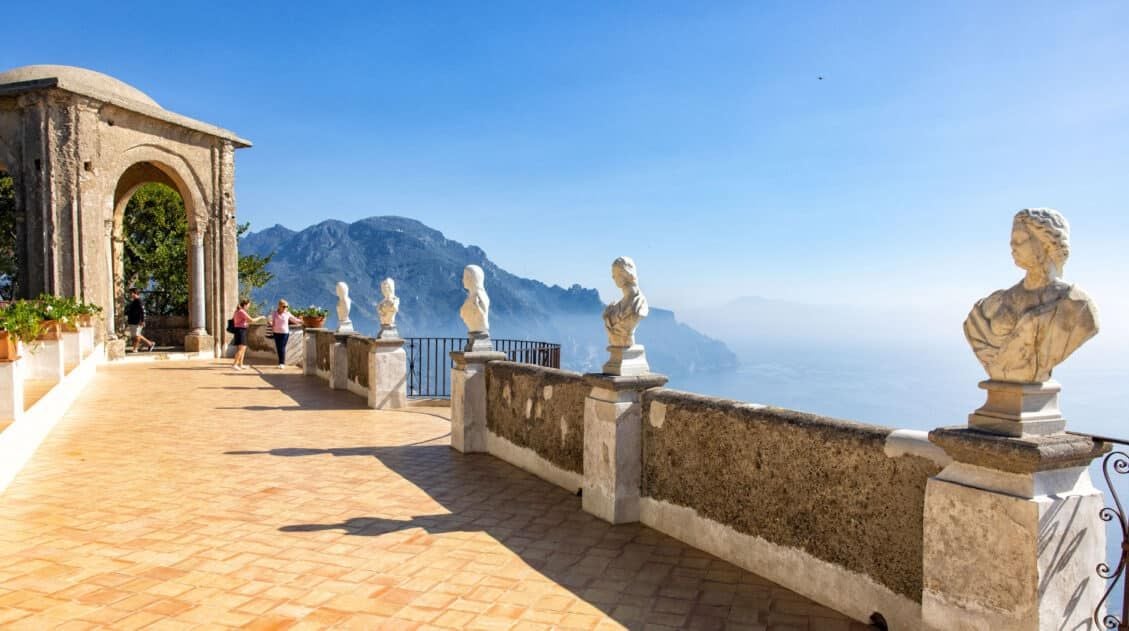
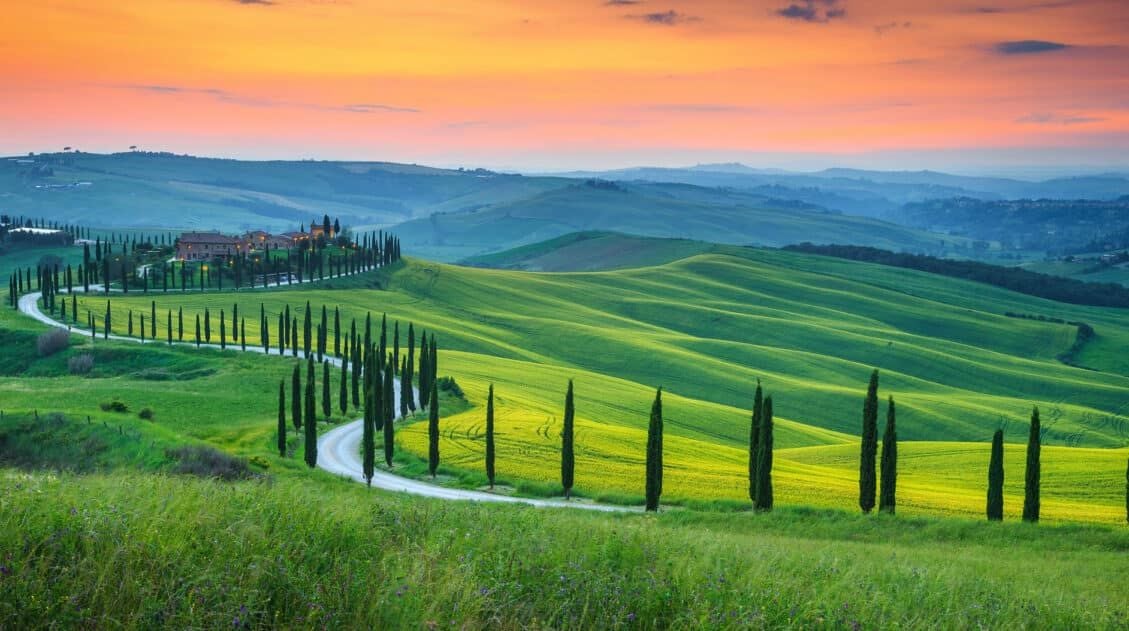
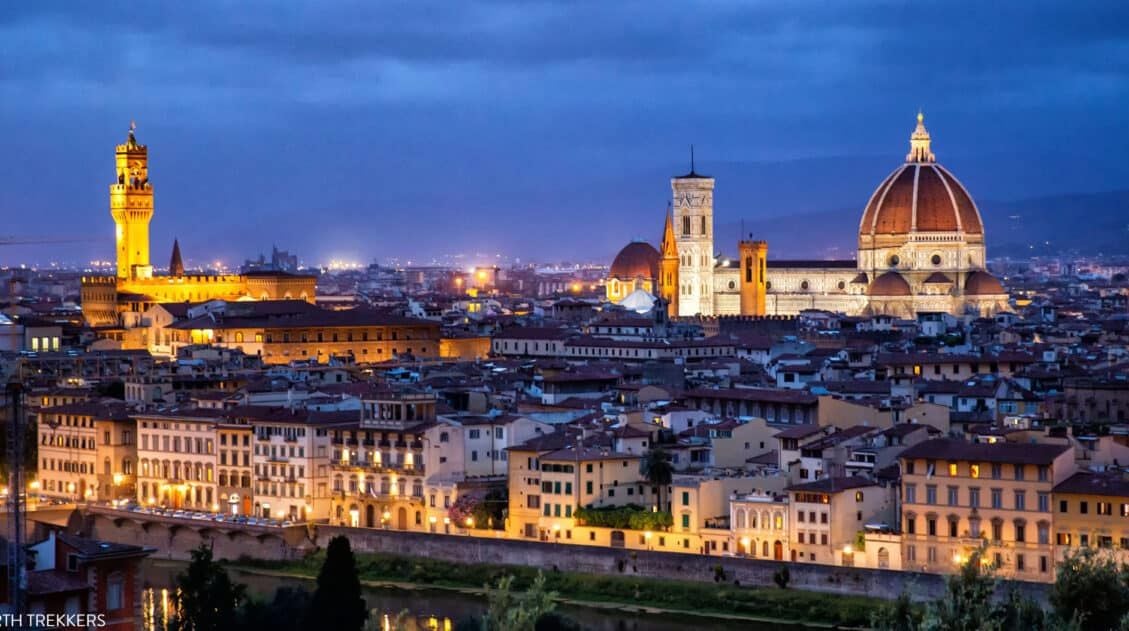
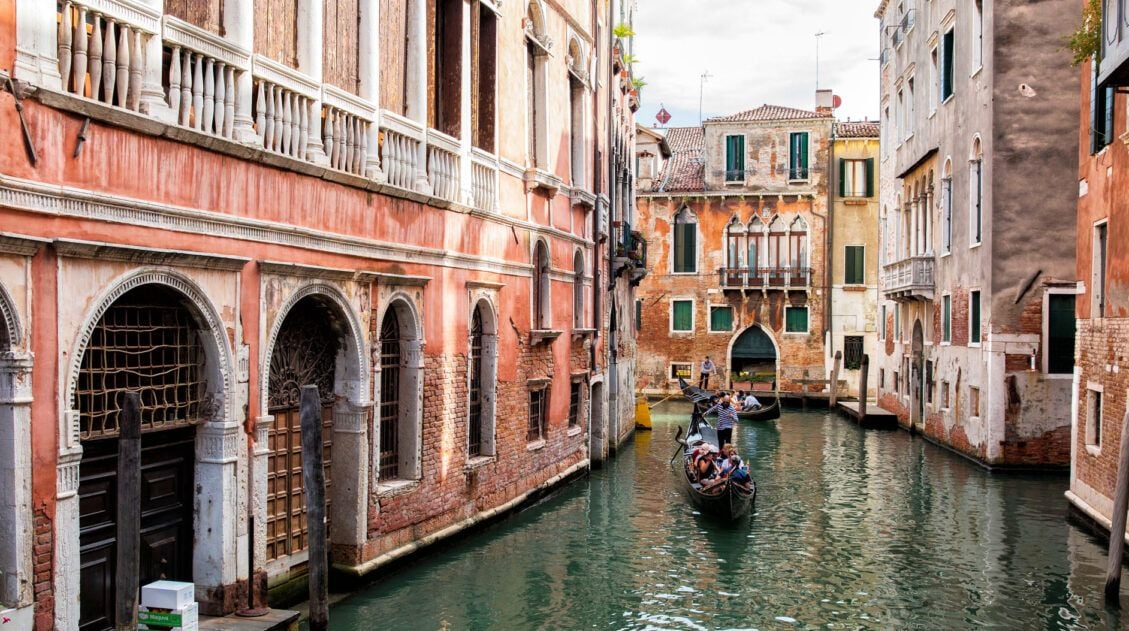
Comments 108